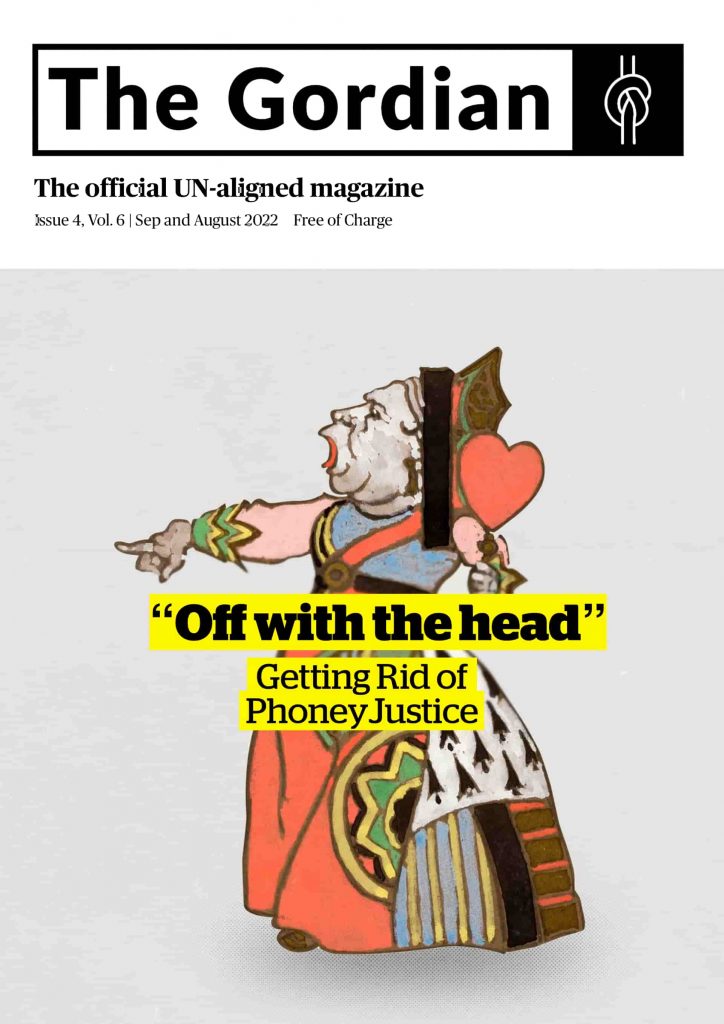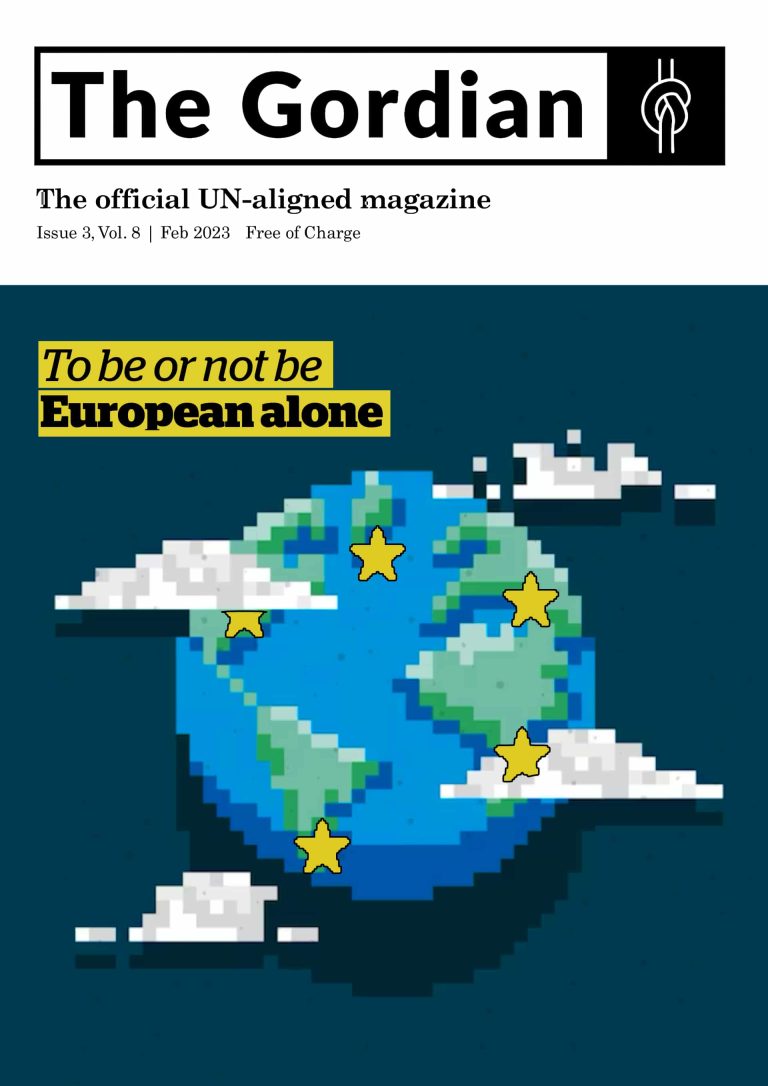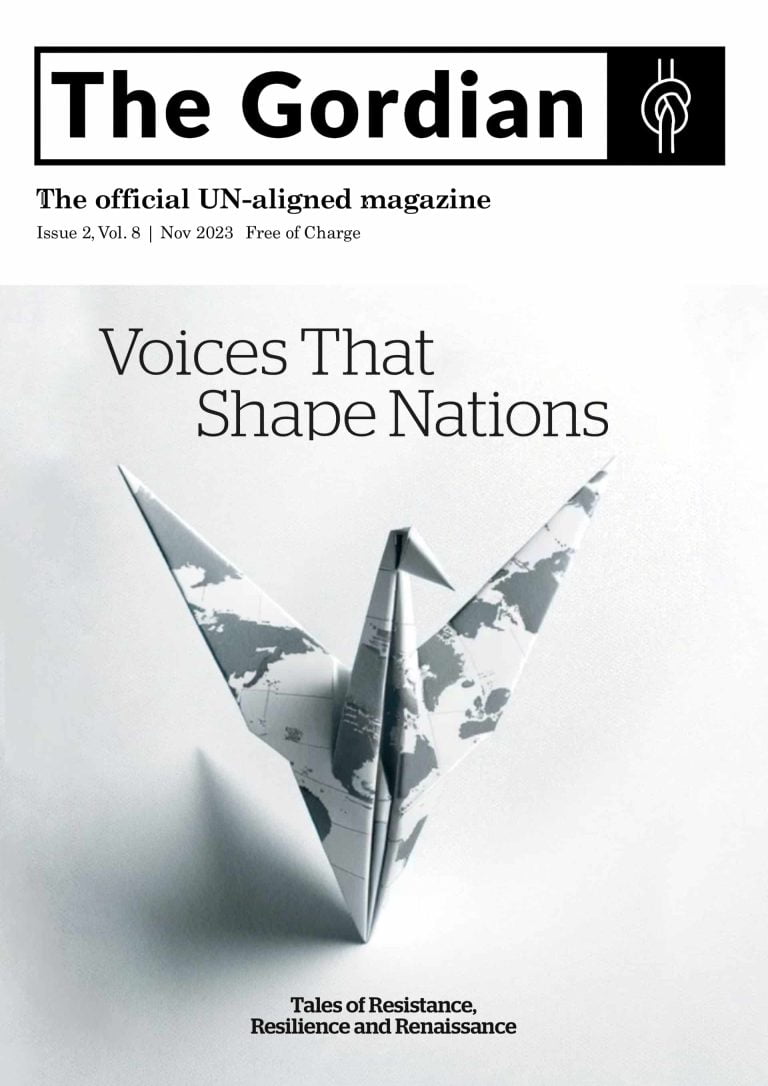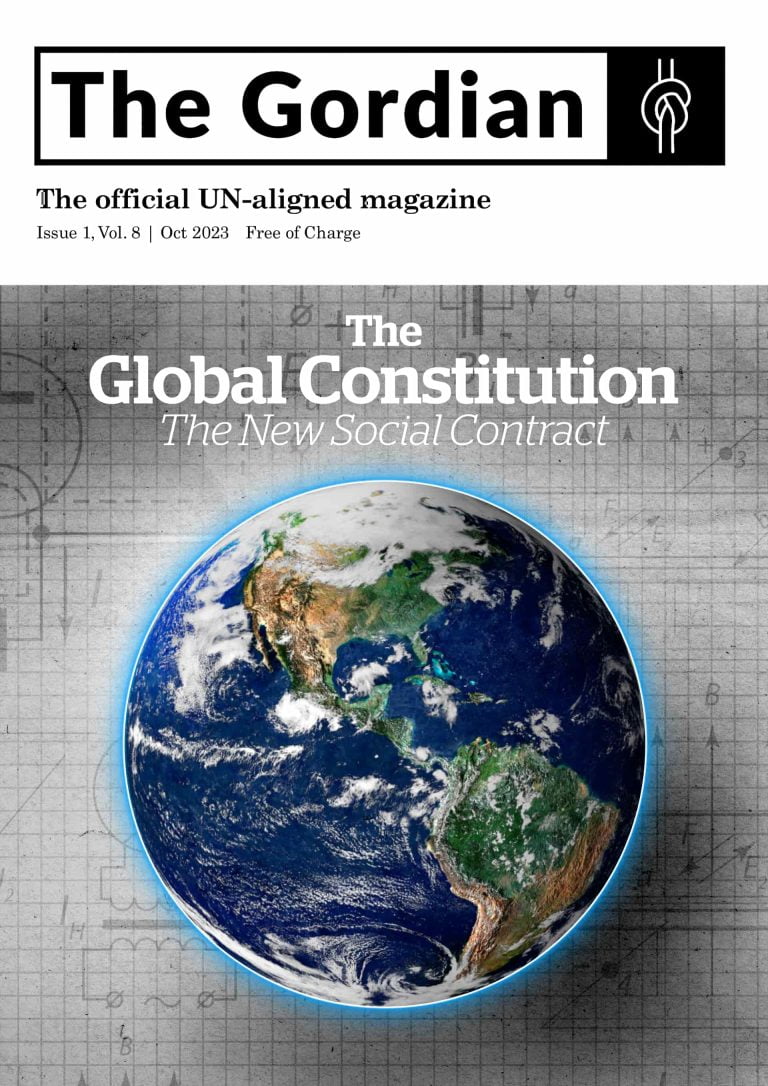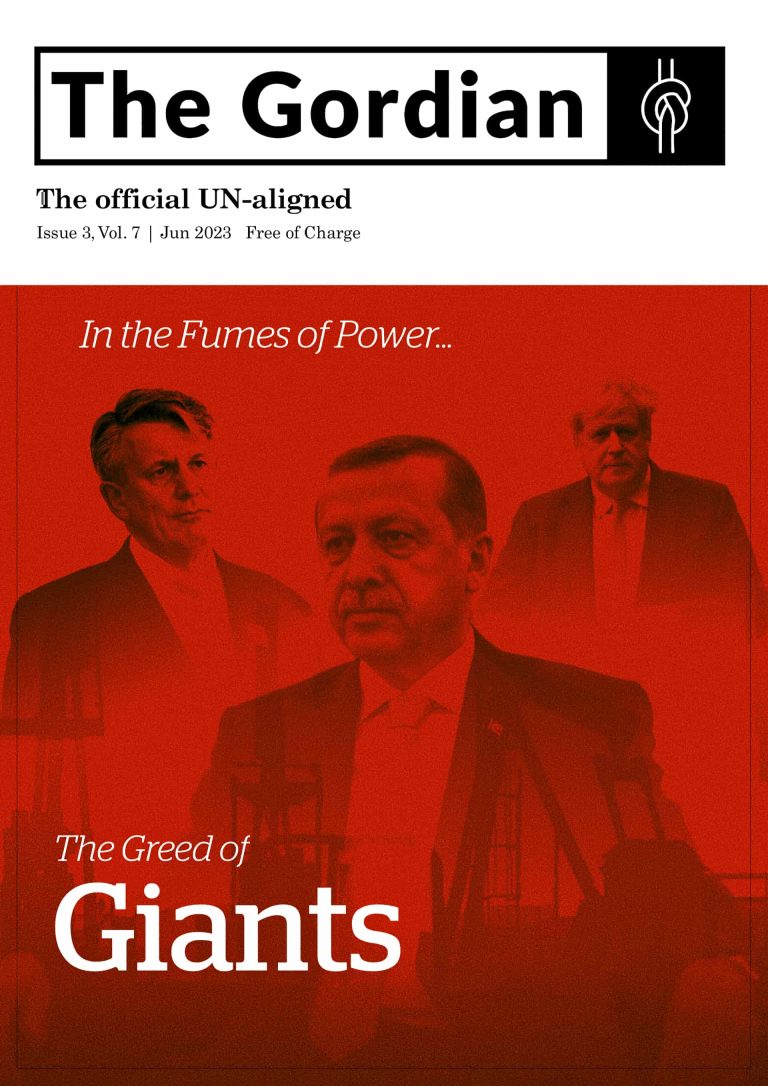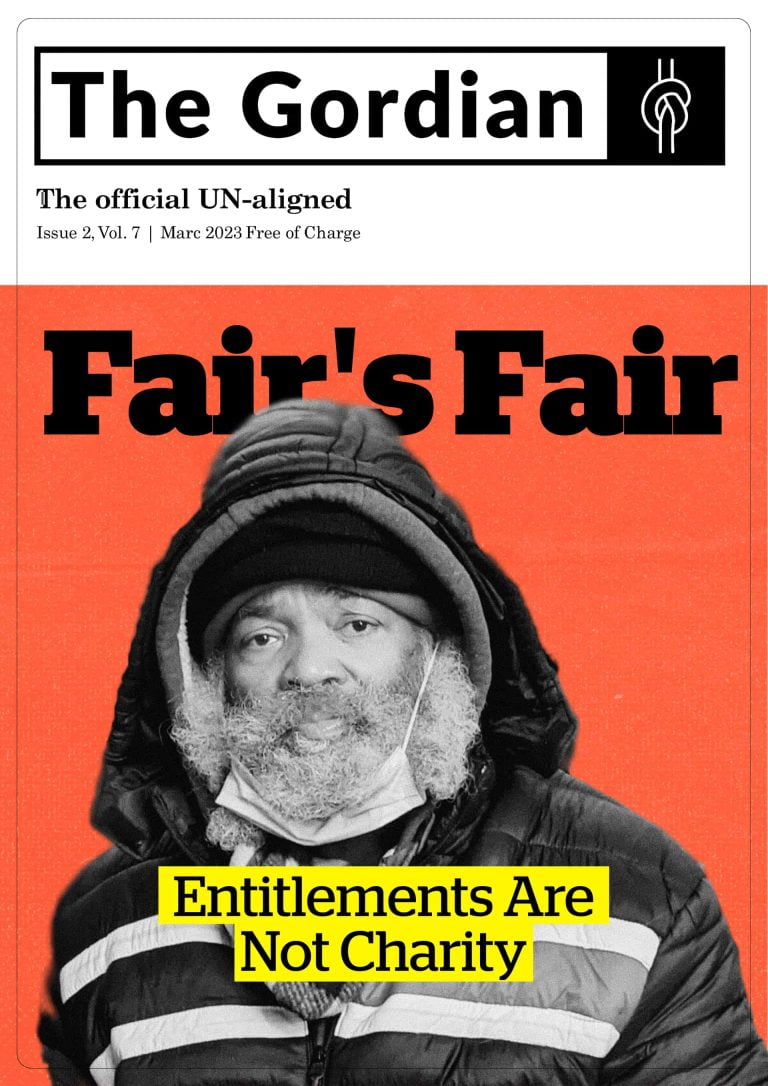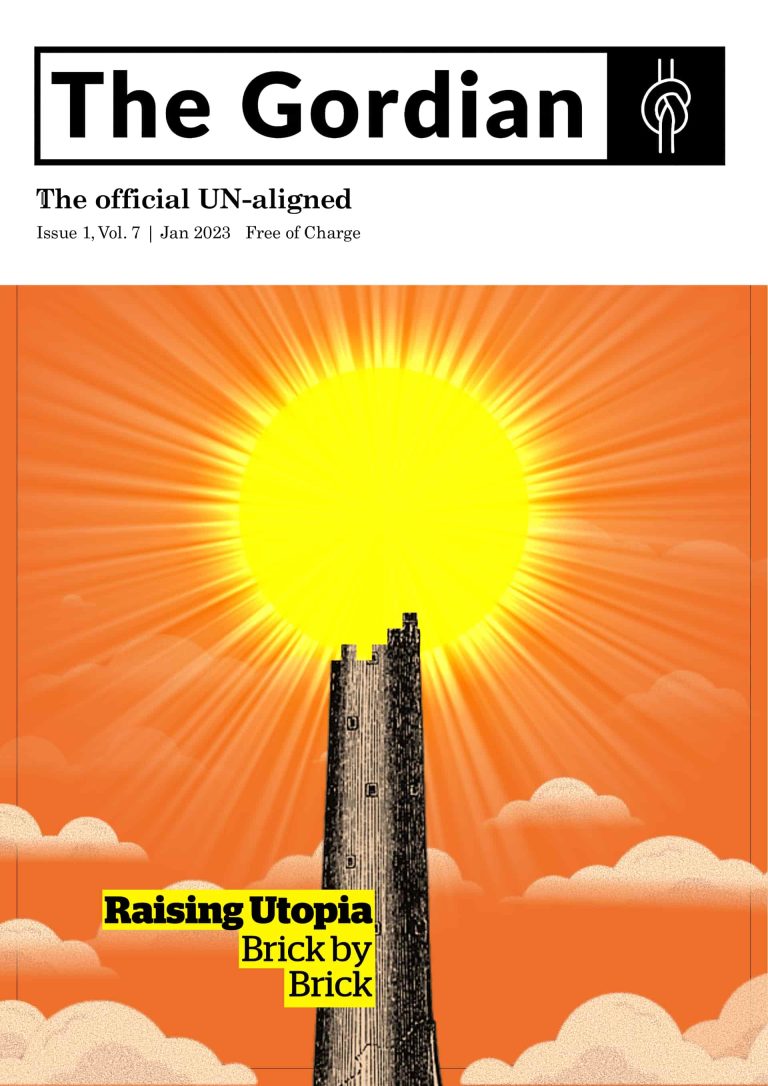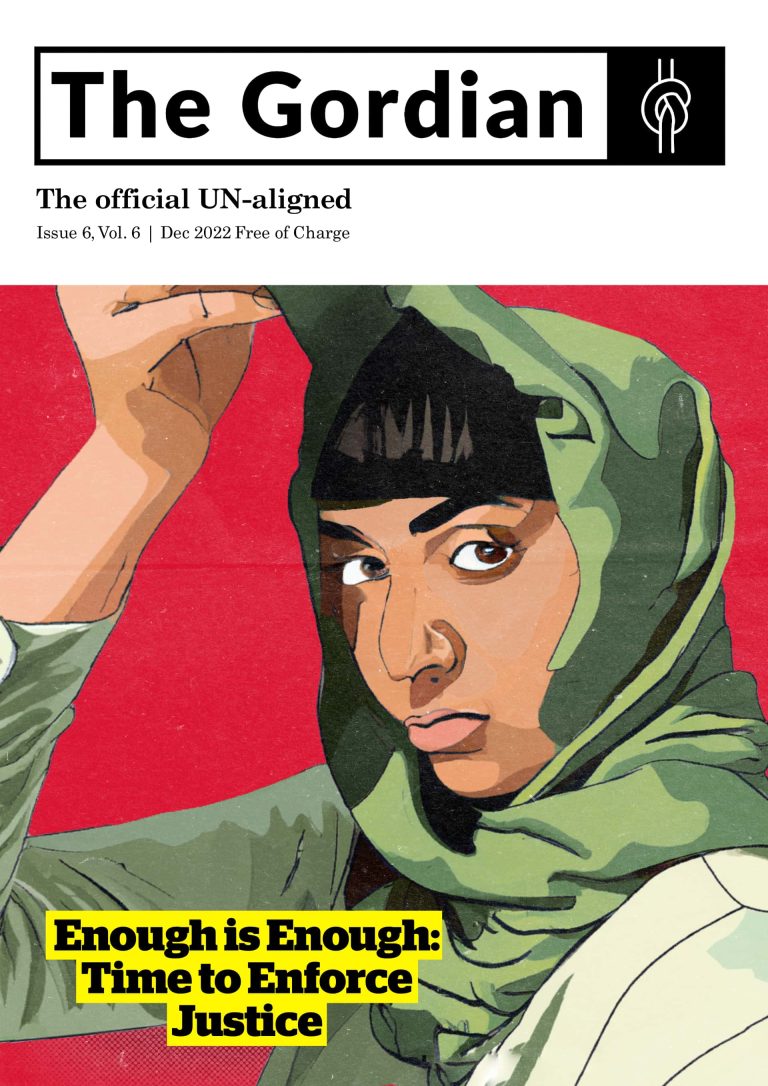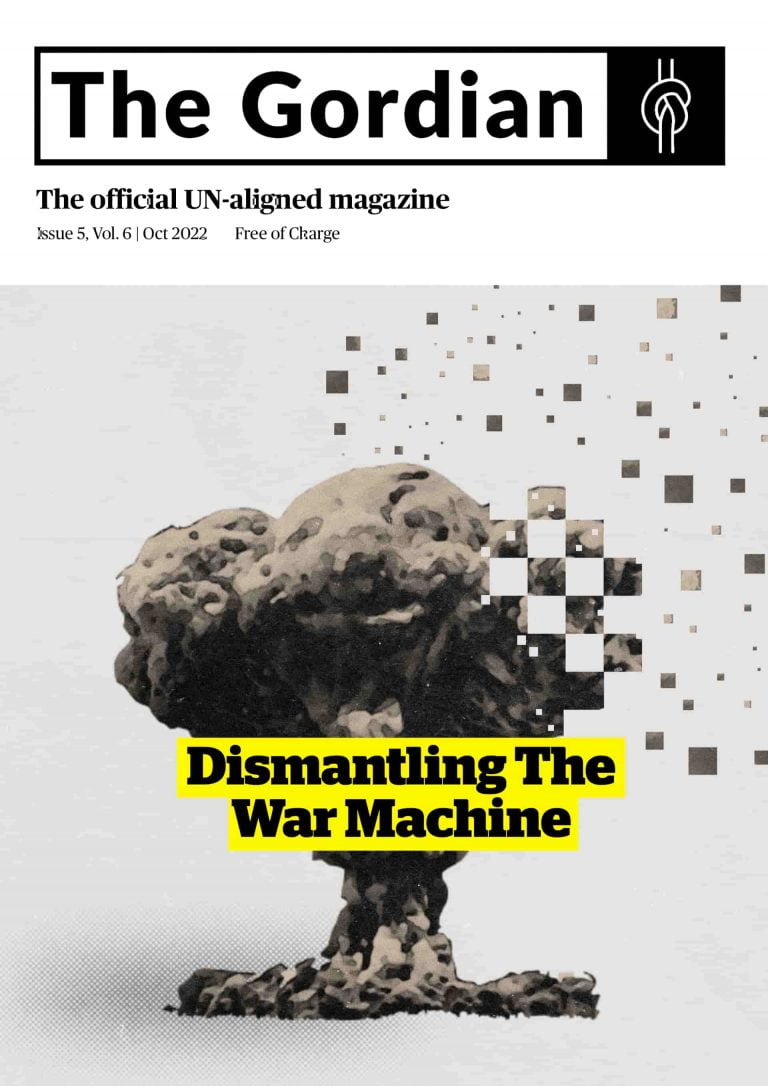Letter From the Editors
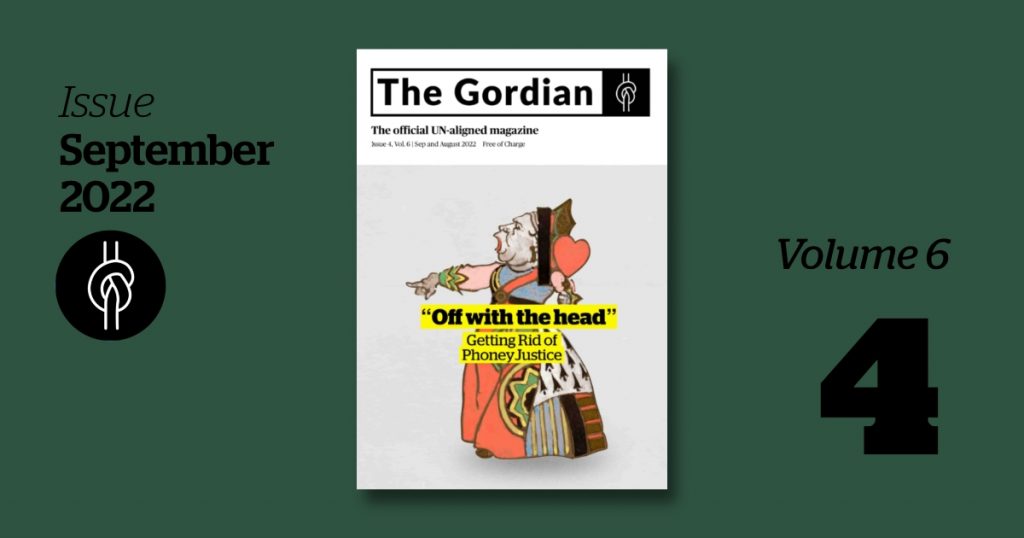
Welcome to the September 2022 issue of The Gordian Magazine.
And here’s another juicy issue of The Gordian! It is later than usual as half of our team was down with COVID-19, even though we are based in several different countries!
Despite the setbacks, the September issue of the Gordian Magazine offers you the usual mix of politics, news, culture and personal pieces. The theme of this series is still justice and in this issue we are looking at it from different angles, hence Adrian Liberto’s article on the death penalty, where he argues that executing a human being is as coldblooded and premeditated as a murder can get.
Maya’s article on the psychological impact of solitary confinement and Omar’s call for an international anti-corruption court.
The new campaign we are launching also focuses on justice and is aimed at the United Nations’ inertia when it comes to speaking out against conversion therapy, which is so harmful to the LGBTQIA+ community.
Of course a range of other topics are covered too, including the environment with the excellent and timely article by our environmental team on how to reduce the risk and damage from forest fires and sports.
We hope you enjoy these stories and the many more in the following pages. Enjoy!
Adrian Liberto and Ariana Yekrangi are the Editors of The Gordian Magazine.

Before you start: This magazine is supported through the voluntary efforts of UN-aligneder from all across the world. If you enjoy it, please help us to take our game up a notch and build on our independent journalism for future years. If you can, please consider supporting the Gordian Magazine with a Patreon subscription. Thank you!
If you are not able to help us financially, that is okay too. Reading the Gordian, telling your friends about UN-aligned and sharing our articles across your social media is enough for us. Remember that tou can also write, translate and research for UN-aligned at any point in time, see how you can get involved and contribute to The Gordian.
Isreal kills like it’s no one’s business…
By Adrian Liberto

August 2022 Recap: Quickly catch up with everything that you may have missed from last month.
Let’s Axe the Death Penalty
By Adrian Liberto
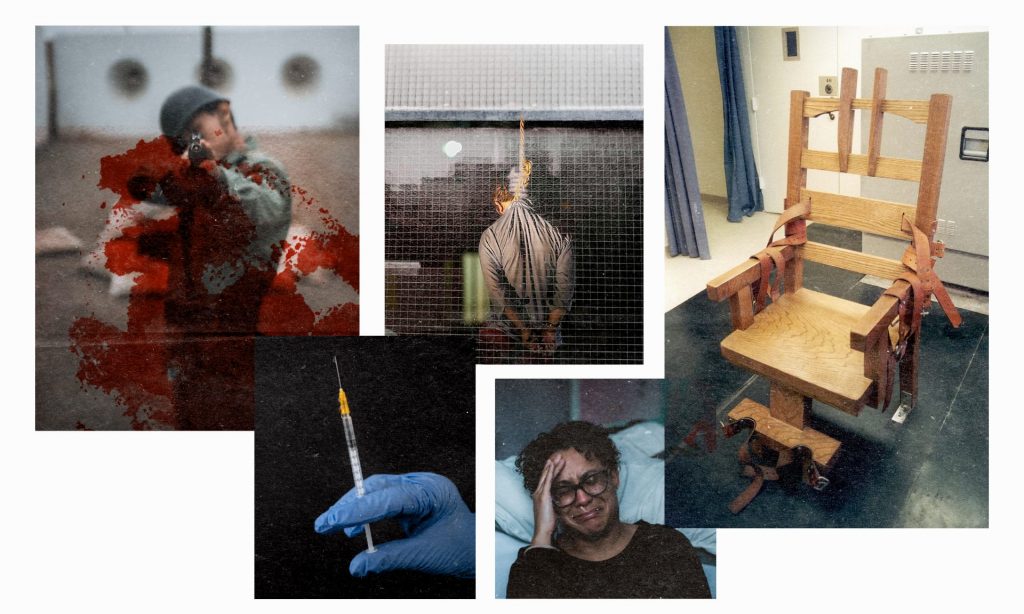
Executing a human being is as coldblooded and premeditated as murder can get, argues Adrian Liberto
Put simply, the death penalty involves legally killing an alleged criminal. “Alleged”, not only because the person may not have committed the crime in the first place, but equally because the crime may have been labelled as such only due to the distorted perspective of the lawmakers. At times, this perspective is biassed in favour of jealousy, bigotry, the acquisition of wealth and power; or the neutralising of a rival or critic.
Only a few weeks ago, the junta in Myanmar did just that, by hanging four of its critics. History is full of such examples. In every age and every corner of the earth, people have been executed for simply saying the truth, expressing a belief or trying to stand up for their rights. Subversives, witches, sectarians, heretics… of course I am using the language of the enemy here. These were probably just enlightened or ordinary people whose death may simply have been of benefit to the powers that be. Sometimes even genocide was legal.
Death penalty in history and art

The unique and eerie church of Santo Stefano Rotondo in Rome offers an interesting representation of the death penalty with its 16th century frescos by Niccolò Circignani (Pomarancio) and Antonio Tempesta, commissioned by Pope Gregory XIII and portraying 34 scenes of martyrdom.
To say that they are gruesome would be an understatement, but Charles Dickens does a good job in describing them in his Pictures from Italy:
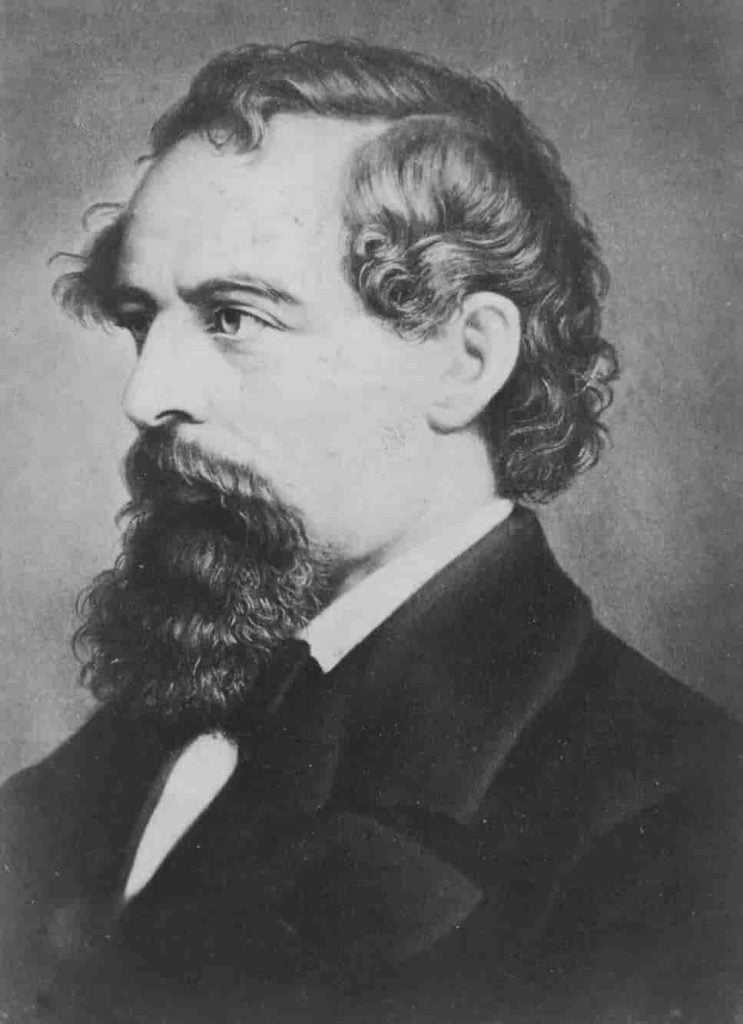
“To single out details from the great dream of Roman Churches, would be the wildest occupation in the world. But St. Stefano Rotondo, a damp, mildewed vault of an old church in the outskirts of Rome, will always struggle uppermost in my mind, by reason of the hideous paintings with which its walls are covered. These represent the martyrdoms of saints and early Christians; and such a panorama of horror and butchery no man could imagine in his sleep, though he were to eat a whole pig raw, for supper. Grey-bearded men being boiled, fried, grilled, crimped, singed, eaten by wild beasts, worried by dogs, buried alive, torn asunder by horses, chopped up small with hatchets: women having their breasts torn with iron pinchers, their tongues cut out, their ears screwed off, their jaws broken, their bodies stretched upon the rack, or skinned upon the stake, or crackled up and melted in the fire: these are among the mildest subjects.”
I suppose we can now add the electric chair and the lethal injection to the mix. Still, my concern in this article is not so much the means, as the principle itself. Nor will I delve into its use by backward governments that apply it for bigoted or despotic reasons such as sodomy, adultery, atheism or, as in the case cited above of Myanmar, oppression.
Anyone with a shred of decency would know that such abuse of power is barbaric and repulsive. I will therefore focus on three points:
- I will discuss whether it is an effective deterrent;
- I will consider whether it is predominantly safe from error or abuse and finally;
- I will focus on whether it is morally acceptable even in the clearest cut case of a murder having been committed.
Spicing death up: Is the death penalty an effective deterrent?
Thankfully, nowadays many countries have abolished the death penalty. By the end of 2021, 108 had done so. They realised how open to abuse or miscalculation such a practice could be, but more importantly, the futility and injustice of the principle itself. Of course, the US is not in that category, with over half of its States allowing the death penalty.

In 2021, the US had executed 11 people. Needless to say, it is not in very good company, as far as human rights go, with China topping the list of executions, followed by Iran, Egypt, Saudi Arabia and Syria. According to Amnesty International:
“At the end of 2021, at least 28,670 people were known to be under sentence of death. Nine countries held 82% of the known totals: Iraq (8,000+), Pakistan (3,800+), Nigeria (3,036+), USA (2,382), Bangladesh (1,800+), Malaysia (1,359), Viet Nam (1,200+), Algeria (1,000+), Sri Lanka (1,000+).”
Clearly, these countries think that the death penalty is a deterrent and, in some instances, they may be right, but only if terror is added to the mix. Many people have a fatalistic view of death, or at least they have come to terms with it. Death of itself is not much of a threat when we are angry or motivated enough to want to kill someone. However, as the ancients understood, and the Santo Stefano Rotondo frescos highlight, by adding agony and torment to the equation, people are more likely to think twice.
As soon as the Christians moved from the arenas to the stalls, they too adopted the oppressive practices, burning people at the stake being one of their favourites, although by the 1800s the Papal States tended to opt for hanging, beheading and bludgeoning to death instead. Different cultures had different methods.
One of the most gruesome was certainly a Persian method known as scaphism, or the boats. This involved locking the unlucky victim within two boats after having over fed or force fed them so that their excrement could attract all kinds of insects, while the face arms and legs, which were left popping out, were covered in milk and honey to attract other insects. It was an extremely slow and excruciating death.
Building a whole culture around fear could therefore work as a boost to the death penalty in keeping people in check especially when the death penalty or severe sentences are imposed for harmless deeds or minor crimes because the spectre is forever hanging over one’s life. Despotic states like Iran function that way, but so did European countries, until fairly recently.
In England, for instance, the last people to be hanged for sodomy were James Pratt (1805–1835) and John Smith (1795–1835): they were convicted simply by the testimony of a landlord peeping through a keyhole.
Statistics indicate the truth about death penalty…
Remove the overall oppression and the horror, however, and statistics indicate that the death penalty is not really an effective means of keeping people from committing serious crimes like homicide. In the US, for instance, the statistics show that States that did not have the death penalty, had consistently fewer murders than those that did, with the gap widening consistently since the 1990s. So yes, when linked to barbarism and oppression, the death penalty can be a deterrent, but otherwise it is not. This is probably also because States that do not opt for the death penalty, such as Finland, invest more in prevention and education, and setting the example of valuing all human life.
Doubting all reasonable doubt: Is the death penalty safe from error or abuse?
According to data collated by Science, in the US, up to one in 25 people who are sentenced to death may actually have been erroneously convicted. The Equal Justice Initiative found that for every nine people executed in the US, one person on death row gets exonerated.
Sometimes these are bona fide convictions that just got it wrong… often they are not. The deceit and abuse involved in some of these cases is mind boggling, especially when prejudice is involved, as in the conviction of Walter McMillian (Johnny D.), a black man from Alabama.
He was accused of having murdered an 18-year-old white woman in 1986. Despite multiple witnesses confirming his alibi, he was convicted in 1988 after a trial that lasted only one and a half days. The predominantly white jury chose to ignore the overwhelming evidence in his favour and relied solely on the word of three witnesses who had testified against him.

The sentencing verdict was life, but the judge, Robert E. Lee Key, overruled it and pronounced the death sentence instead. Johnny D. did not have a criminal record and was a respected self-employed logger. However, he was known to have had an affair with a white woman, which was enough to mark him as a target for enquiry by a racist institution that was struggling to find a lead. After about six years on death row, he was finally released in 1993, when irrefutable evidence, including a tape recording, proved that the witnesses had been coerced to falsely testify against him. The Equal Justice Initiative puts it plainly:
“Our death penalty system treats you better if you’re rich and guilty than if you’re poor and innocent. As a result, a stunning number of innocent people have been sentenced to death.”
Of course, not every convicted person can be as “lucky” as Johnny D. (if we can call someone who had to undergo six years of hell, lucky); many are forced to take their innocence to their graves.
Notable miscarriages of justice in the US include: Carlos DeLuna (convicted in 1983 and executed 1989) Ruben Cantu (convicted in 1985 and executed 1993) and Larry Griffin (convicted in 1981 and executed 1995).
So when it comes to the death penalty, we are left with a paradox: only a perfect system could ensure that errors in conviction are not made, but if such a system existed, it would certainly be rehabilitative rather than vindictive. In other words, by its mere existence, the death penalty excludes the possibility of a safe, evolved and fair justice system.
A life for a deed: Is the death penalty morally acceptable even in the clearest cut case?
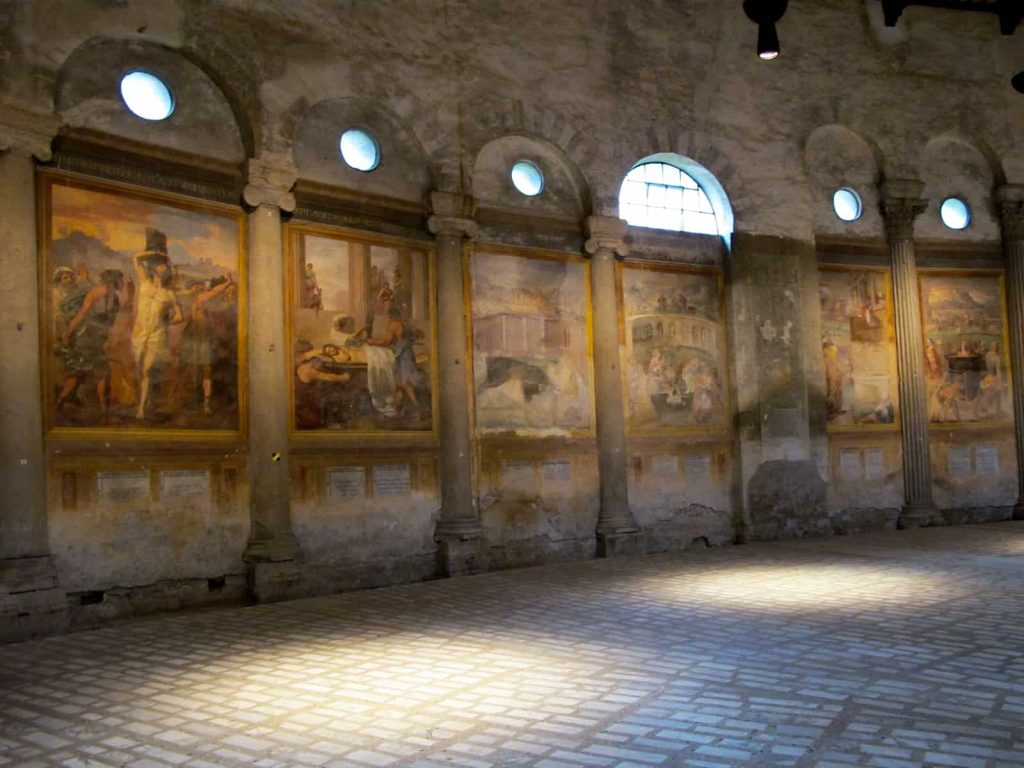
For better or for worse, things change. The church of Santo Stefano Rotondo changed for the worse when a recent renovation repaved the floor with glaring glossy tiles that would have been more at home in a fast-food restaurant than a church whose roots go back to Emperor Constantine himself.
People also change, unless they are killed, that is, and deprived of that chance, which is often what the death penalty does. “Often”, because sometimes it does give that chance: people are kept on death row for years, allowed to change, usually for the better, and then killed off irrespective.

The case of Karla Faye Tucker is a perfect example of this. She committed a double murder in 1983 when she was 23 and in a bad place as she explained in touching interview to Larry King:
“A lot of drugs, a lot of anger and confusion, no real guidance, I was just out of hand, and had no guidance at a certain point in my life when I was most impressionable and probably could have been steered the right way. There wasn’t anybody there to steer me.”
Tucker was arrested a few weeks after her crime and sentenced to death late in 1984. She was held on death row until 1998 when she became the first woman to be executed in Texas since the Civil War. Within that time, she had become a born-again Christian and a completely reformed person, even marrying her prison minister, Reverend Dana Lane Brown, in 1995.
Revenge is better than redemption
There were, of course, many pleas for clemency, but these were rejected, right up to the 11th-hour appeal to block her execution made to George W. Bush, who was then the Texas Governor. In the minds of many legislators, revenge is better than redemption.
Spending agonising years in prison only to be executed years later is not uncommon in the US. Carey Dean Moore, for instance, who was sentenced to death in 1980 for the murders of two cab drivers, spent a whopping 38 years on death row before his execution in 2018. This is not justice, but abuse of power, plain and simple.
Coldblooded premeditated murder
St Augustine justified executions carried out according to the law, even though the law just over a hundred years earlier was condemning Christians to those gruesome deaths recorded on the walls of Santo Stefano Rotondo. He also exonerated the executioners:
“The agent who executes the killing does not commit homicide; he is an instrument as is the sword with which he cuts.”
Shaggy’s song It Wasn’t Me, springs to mind. Augustine’s are soothing words for an easily duped conscience.
The minute we allow ourselves to become “instruments” we have lost our humanity and are dangerous tools in the hands of any power that we would let ourselves be manipulated by, be it secular or religious. All said and done, executing a human being is as coldblooded and premeditated as a murder can get. It is not self-defence, because the danger has passed. It is not justice, because a person can always outweigh their deeds, and they can change, given the chance.
Taking that chance away is the true crime.
Solitary confinement is cruel and amounts to torture
By Maya Bearyman
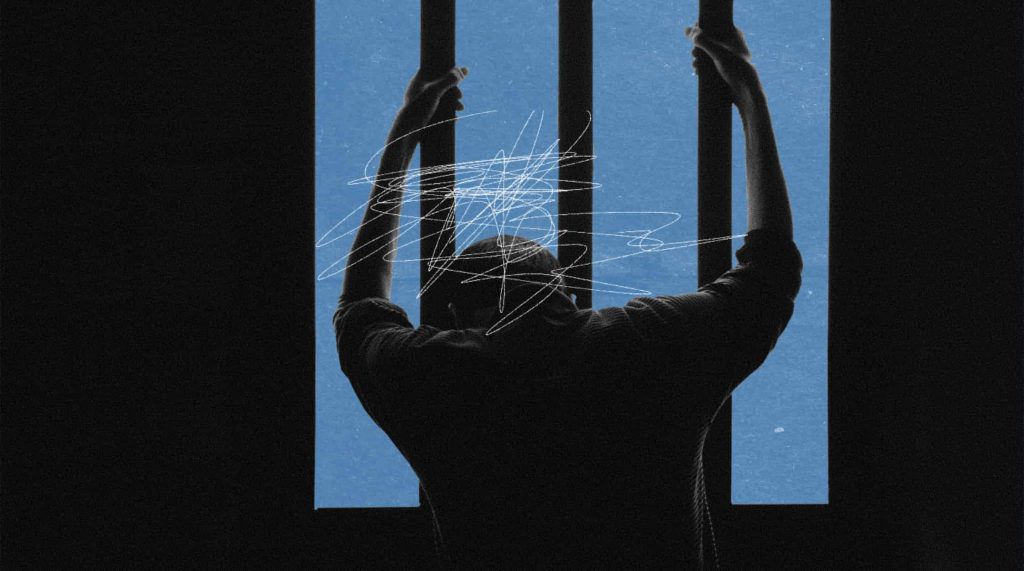
The UN defines torture as cruel, inhumane and degrading treatment which deprives individuals of their basic human needs to the extent that it inflicts harm. Solitary confinement clearly reaches this bar, stripping prisoners of their rights to socialisation at the cost of their mental health.
Solitary confinement often achieves fewer goals than keeping prisoners under control more quickly and satisfying a perverse need to see pain inflicted on those deemed criminally responsible, with little regard for the consequences. In doing so, the prolonged use of solitary confinement contravenes many national statutes. These include the 8th Amendment to the US Constitution, the Nelson Mandela Rules put forth by the UN, China’s Prison Law and European Prison Laws. In 2011, UN Special Rapporteur for Torture Juan E Mendez claimed that in many cases, it breaks international law, and he has called for a ban.
What is solitary confinement?
Solitary confinement is the practice of keeping people, most often prisoners, alone for the vast majority of their day, with minimal social interaction or stimulation. Researcher Sharon Shalev describes the conditions in her 2009 book ‘Supermax: Controlling Risk Through Solitary Confinement:
- Cells are typically slightly bigger than a typical lift, comprised of a bathroom and sleeping area
- People are held in these cells for between 22.5 and 24 hours a day, only allowed out once a day to walk up and down a small corridor alone
- There are no group activities at all and very few rehabilitative programmes
- Limited visitors, in many cases none for years, and then only thick pane of glass
In 1955, the UN adopted the Standard Minimum Rules for the Treatment of Prisoners. These created guidelines about how prisoners should be treated and were expanded in 2015 to become ‘Nelson Mandela Rules’ in celebration of one of the most celebrated prisoners of all time. The rules dictate that solitary confinement should only be used in circumstances where it is the last resort.
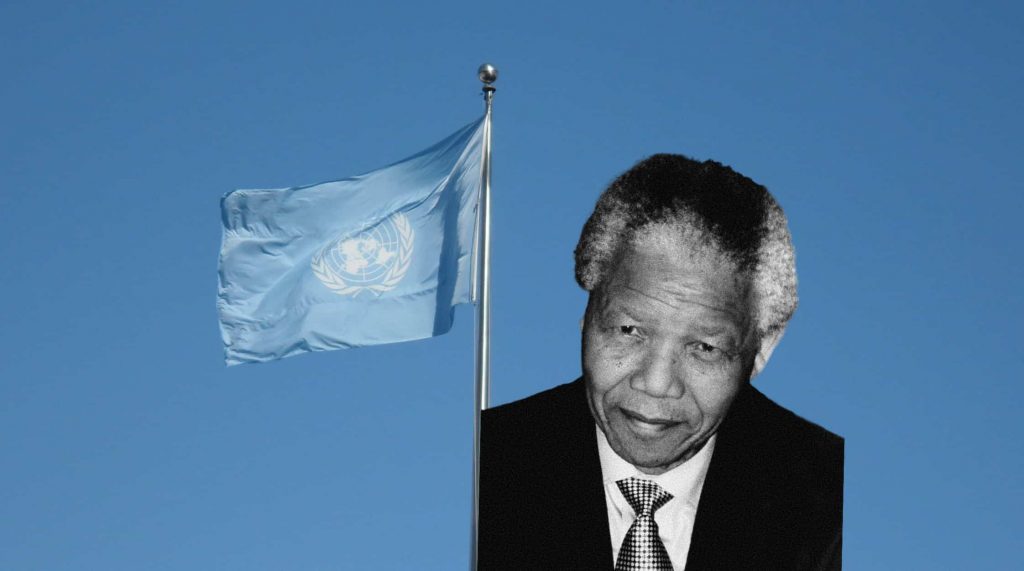
UN Special Rapporteur Juan E Mendez has stated that ‘solitary confinement is a harsh measure, contrary to rehabilitation’ – the purported aim of the penal system. He claims it can amount to torture, should not be used for more than 15 days with any person, and should not be used at all in the cases of minors or those with disabilities. In cases where it is used, authorities should follow a set of guiding principles for safeguarding.
Despite this, solitary confinement is used widely globally. A 2016 UN report found that most countries that use solitary confinement do so punitively. One of the most prolific users of solitary confinement in the world, the US, has between 80,000 and 100,000 prisoners in solitary confinement at present.
What are the consequences of solitary confinement?
12 times more likely to die
Its consequences are stark and, in many cases, permanent. American prisoners who experienced one placement in solitary confinement were 17% more likely to experience premature death of any kind and 55% more likely to commit suicide than similarly matched prisoners. For prisoners who had experienced multiple placements in solitary confinement, the risks more than doubled, with a suicide risk of more than 129%. In the first two weeks after release from prison, a person who has undergone solitary confinement is 12 times more likely to die than somebody from the general population.
One of the most significant casualties of solitary confinement is a loss of identity. Personal identity is, in part, defined by social interaction and where a person sees themselves fitting in the broader social order. People who are kept away from other people do not have these parameters to define themselves within, so they lose the sense of who they are. In many cases, they lose their sense of being all together and begin to question if they even exist.
Sturt Grassian examined the psychological impacts of solitary confinement, identifying that it induced a novel psychiatric illness. The symptoms of this illness were similar to those of anxiety (panic attacks, intrusive thoughts, hyperresponsivity to typical daily stimuli) but also included: overt paranoia; problems with impulse control; and difficulties thinking, concentrating and remembering. This collection of symptoms is distinct from any other mental illness and impedes the capability of a prisoner to function anywhere outside of solitary confinement.
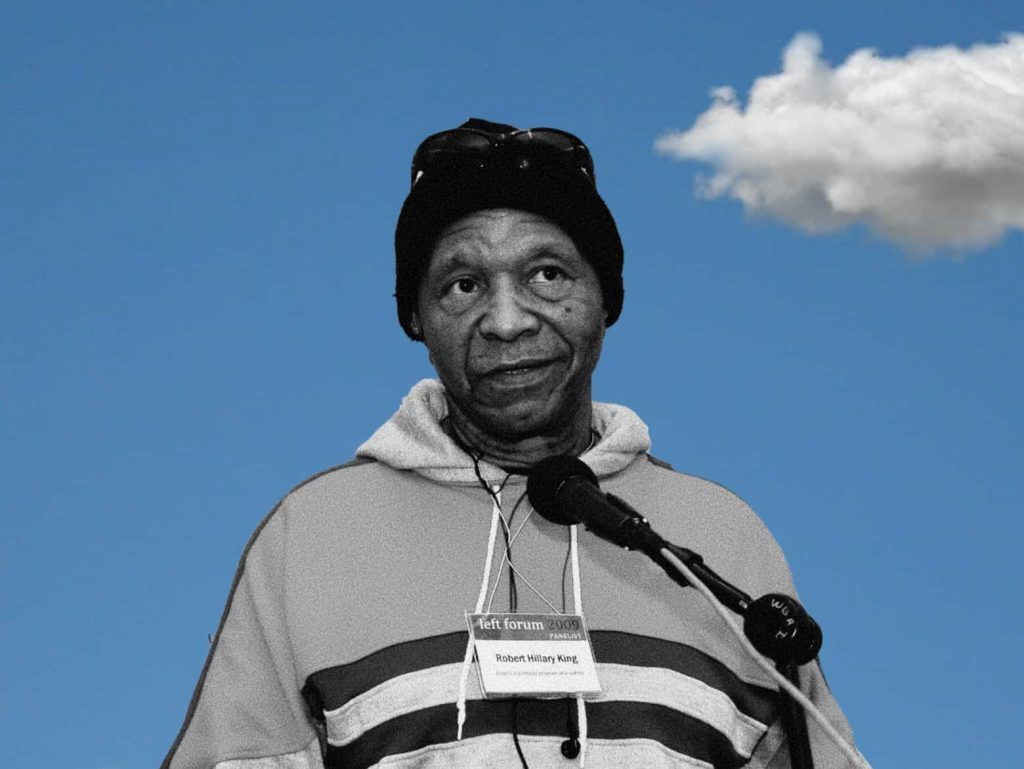
Robert King was part of the Angola Three, a trio of men who were kept in solitary confinement for twelve years after being convicted of killing a fellow inmate. His state eventually overturned his conviction. Whilst investigating the impacts of solitary confinement on King, researchers found permanent neurological damage. King has lost several cognitive faculties, has an impaired memory, and now finds it difficult to navigate his surroundings. He experienced psychosis and changes in how he experienced external stimuli. Much of this damage is indicative of damage to the hippocampus, the area of the brain that is involved in memory, spatial orientation and emotional regulation.
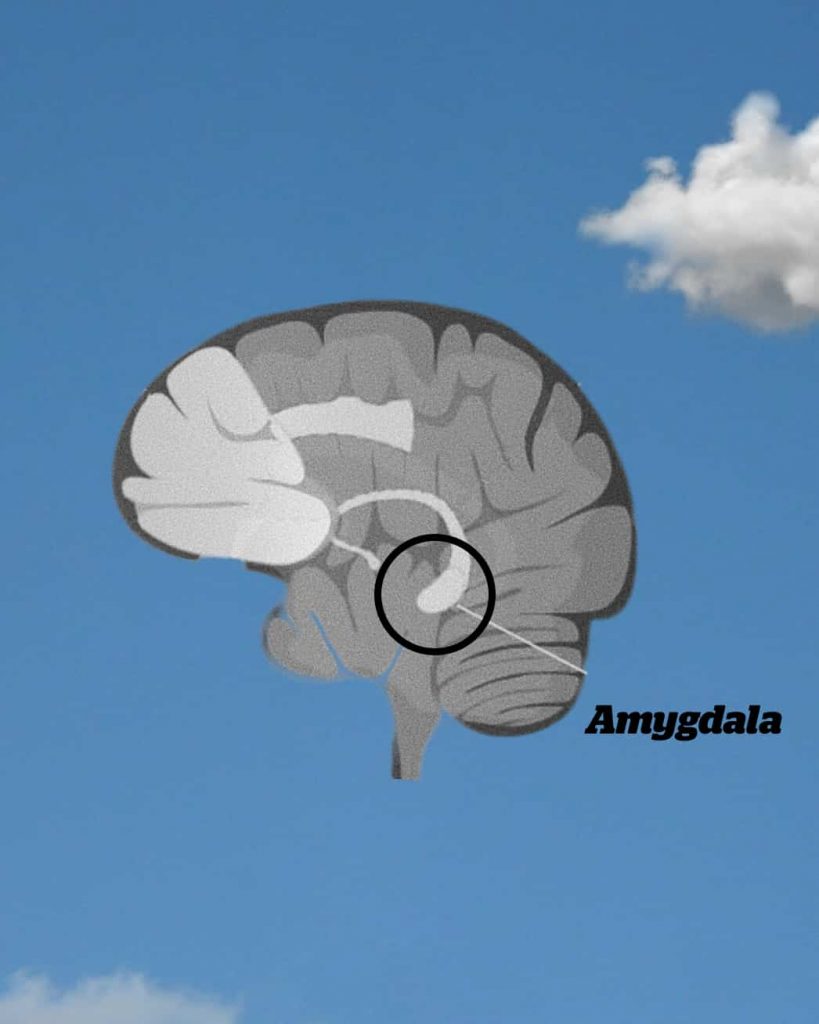
These findings are consistent with the work of neuroscientist Richard Smeyne, who found that after just one month of solitary confinement, neurons in the sensory and motor regions of the brain shrunk by 20%. On the other hand, the amygdala (the area of the brain responsible for fear and anxiety) increased its activity in response to solitary confinement.
Likely, as a result of this illness, the risk of reoffending is higher for prisoners in solitary confinement. The risk of reoffending in all crimes is around 15% higher for prisoners who have experienced solitary confinement. It rises to approximately 25% higher for violent crimes. These discrepancies are hardly surprising when considering that many of the symptoms characteristic of solitary confinement syndrome are risk factors for offending. Research has demonstrated that low impulse control, intrusive thoughts and overt paranoia may increase the likelihood of violent criminal behaviour, as a detachment from reality forces a person to interpret others’ behaviours as threatening when not intended.
Solitary confinement is torture. Very few say it better than Charles Dickens:
‘I hold this slow and daily tampering with the mysteries of the brain to be immeasurably worse than any torture of the body; and because its ghastly signs and tokens are not so palpable to the eye and sense of touch as scars upon the flesh; because its wounds are not upon the surface, and it extorts few cries that human ears can hear; therefore the more I denounce it, as a secret punishment which slumbering humanity is not roused up to stay.’
It is inhumane and harmful to the highest degree, comparable to even the most heinous physical tortures. The UN must work harder to prevent its use globally, regardless of the power its main perpetrators have over the organisation. Anything else is negligent.
Sign now: OHCHR, take action to ban harmful conversion practices against LGBTQIA+
By Victoria Davila
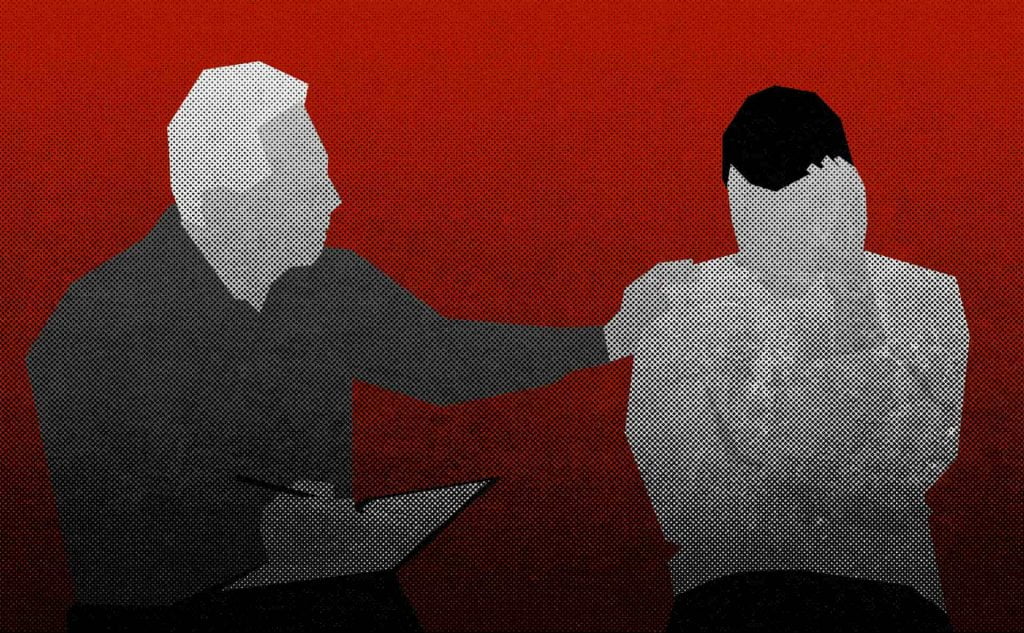
UN-aligned and Hidayah LGBT call on the OHCHR to take action to ban harmful conversion practices against LGBTQIA+. Read and sign the letter now.
Mridul Wadhwa on Conversion Therapy and Edinburgh Rape Crisis Centre
By Victoria Davila
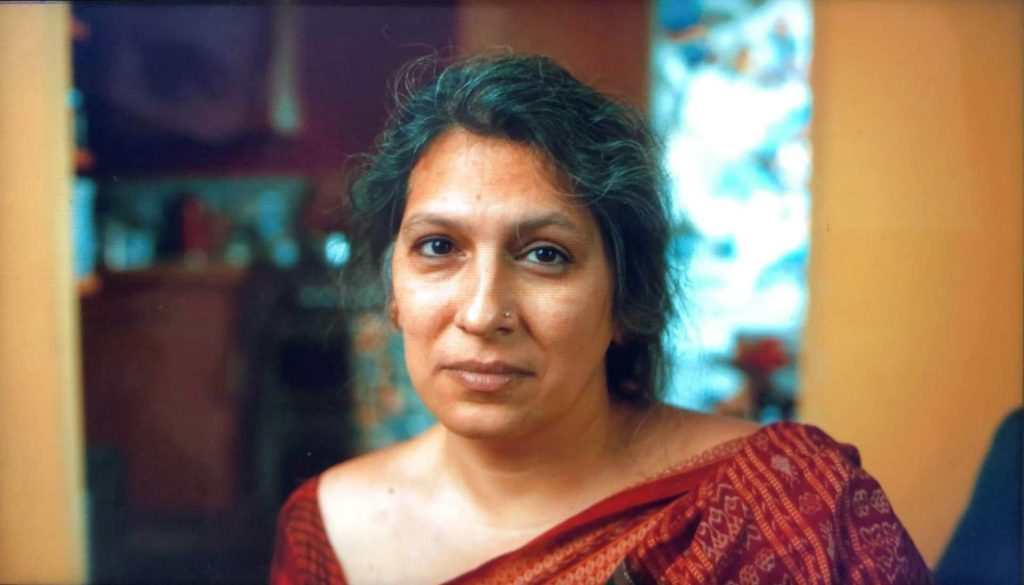
Mridul Wadhwa, CEO of the Edinburgh Rape Crisis Centre, spoke with UN-aligned about her journey into the gender-based violence sector and ways to tackle conversion practices and promote LGBTQ+ rights worldwide.
UN in Focus
Is Mexico suing the United Nations?
Adrian Liberto for UN in Focus
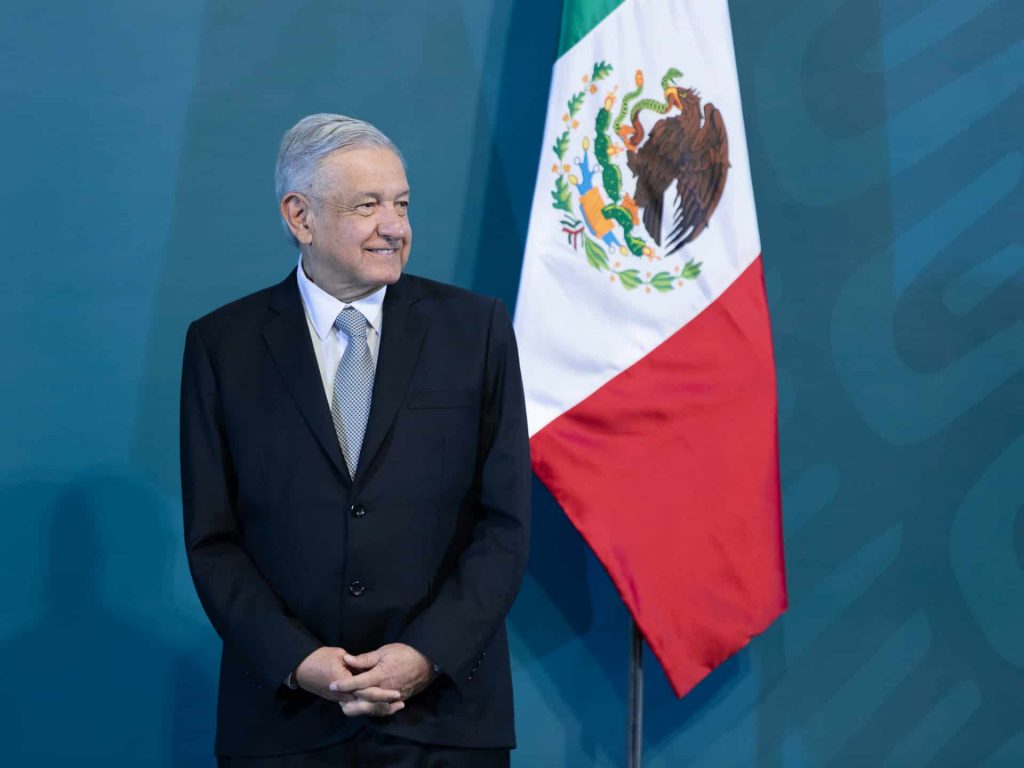
Mexico threatens to sue the UN following the WHO’s failure to provide the country with covid vaccines.
Mexico has finally lost its patience with the United Nations and on August 22, President Andres Manuel Lopez Obrador announced that he would be filing a formal complaint with the organisation regarding its failure to honour its commitment to supply the country with 10 million COVID-19 vaccines.
The frustration only increased as the week went on, even as the World Health Organisation offered to ship over some of the owed vaccines.
Deputy Health Minister Hugo López-Gatell went as far as threatening the United Nations with a lawsuit: “So far a little more than 24 million doses have been delivered and we have $76 million outstanding.”
He pointed out. “We have been requesting, requesting and requesting for almost a year to be given the doses that correspond to us … there’s been frustration and great dissatisfaction… The government of Mexico reserves the right to undertake any action, including legal, if this commitment is not fulfilled.”
Obrador also lamented that a “renovation of those international bodies” was well “overdue,” and he accused the UN of shirking its responsibilities.
“International bodies, such as the UN,” he said, “have not wanted to confront the grave problem of inequality and corruption in the world. So that’s why there is migration, that’s why there is violence …”
The WHO warns of pathogenic outbreaks threatening Africa
Adrian Liberto for UN in Focus
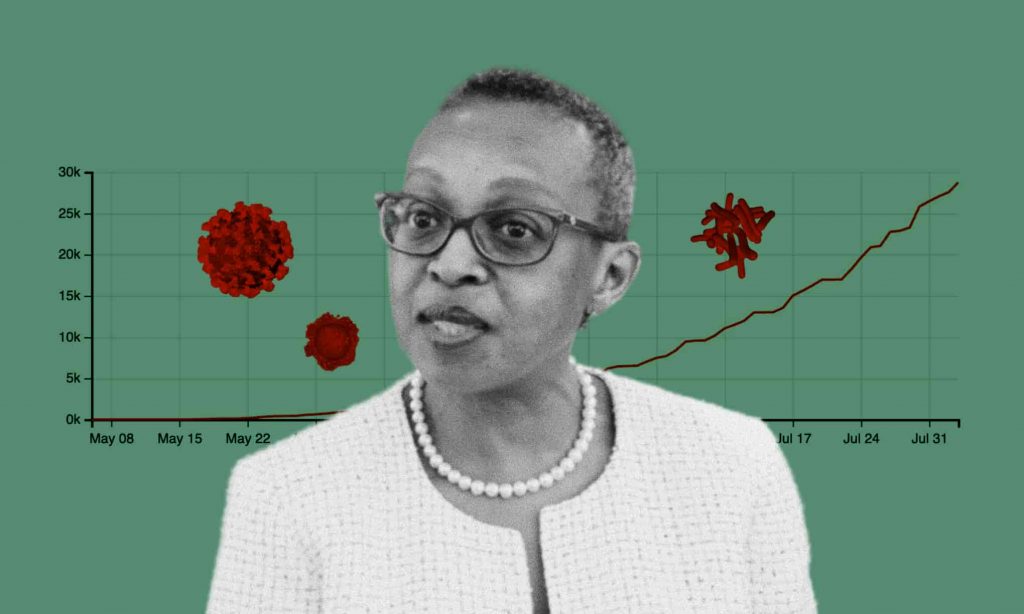
On July 14, the World Health Organisation’s regional director for Africa, Matshidiso Moeti, warned of a growing risk of serious pathogenic outbreaks on the continent, which are being caused by human proximity to wild and domesticated animals.
The WHO reported that zoonotic outbreaks on the African continent increased by 63% from 2012 to 2022 compared to the previous decade.
The global situation was also alarming with pathogens found in animals responsible for more than 60% of human infectious diseases, and more than 75% of emerging infectious diseases.
The WHO noted that these diseases sicken about one billion people every year, while killing millions of them.
Unlike Monkeypox, which was declared a Public Health Emergency of International Concern by the WHO Director-General on July 23, and other diseases whose names clearly indicate their animal origins, many like Aids and Ebola, do not; so for many people these diseases are just a natural hazard.
This cannot be further from the truth. Six out of 10 infectious diseases in humans are zoonotic and the contagion is not casual: it is deeply rooted in our unhinged and relentless abuse of animals, which is, of course, also one of the chief causes of climate change.
The WHO and the UN should do more than just caution about venturing into the wild.
Much more needs to be done to educate and legislate in order to stop humanity from abusing and exploiting animals and killing ourselves in the process. In the words of James E. Lovelock, who developed the Gaia hypothesis:
“Unfortunately, we are a species with schizoid tendencies, and like an old lady who has to share her house with a growing and destructive group of teenagers, Gaia grows angry, and if they do not mend their ways, she will evict them.”
The Ukraine Recovery Conference: When Guterres (almost) told Russia to piss off
Adrian Liberto for UN in Focus
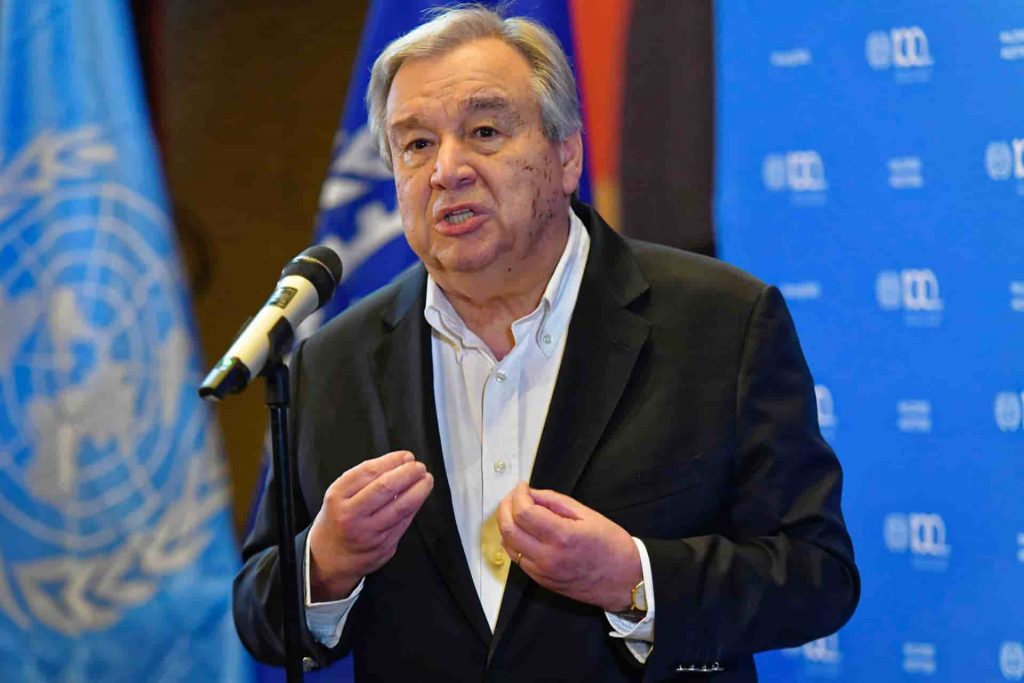
United Nations Secretary-General Antonio Guterres addressed the Ukraine Recovery Conference, which was held in Lugano Switzerland, on the 4th and 5th of July.
The event was attended by over 40 nations and nearly 20 international organisations who approved the Outcome Declaration, vowing support for Ukraine. It is estimated that the recovery plan is already worth $750 billion. The UN chief spoke boldly via a video link:
“Russia’s war in Ukraine has taken thousands of lives and forcibly displaced millions of people. Millions of Ukrainians have lost their livelihoods and 90% risk of falling into poverty.
The damage and devastation to homes, hospitals and schools will take years to rebuild…This is a long road, but it must start now.”
The words are all the more striking considering Russia, one of the five permanent members of the Security Council, is still hard at work trying to obliterate Ukraine.
One cannot fault Guterres, but at the same time, one cannot help comparing him to a spouse in an abusive relationship who does what they can to protect their children from constant harm, other than solving the problem once and for all by telling the abuser to piss off!
China in Focus at UN “Selective Rights Council” (UNRC)
Adrian Liberto for UN in Focus
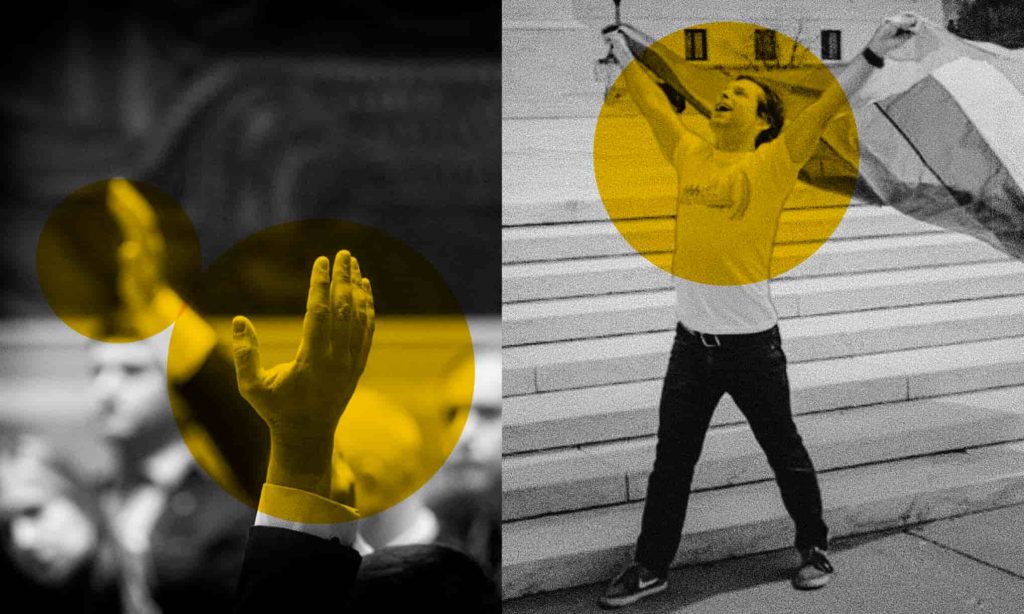
On the 7th July, the Human Rights Council passed a resolution on the protection against violence and discrimination based on sexual orientation and gender identity. That’s no big deal, one would imagine, but sadly, for the United Nations, it is.
That is why a few months ago UN-aligned launched a campaign to bar countries that criminalise LGBTQ+ rights from the Human Rights Council. Despite the fact that our open letter to the United Nations was backed by several organisations and human rights activists, the letter was ignored.
This resolution, which is pretty basic when it comes to human rights, barely made it though, with 23 votes in favour, 17 against and seven abstentions.
In other words, less than half of the Council actually voted in favour. This is alarming by any standards, but a similar scenario happened when the council voted on whether to expel the Russian Federation from the Council, right in the middle of its genocidal operations in Ukraine.
The countries that voted against are no surprise: Cameroon, China, Côte d’Ivoire, Eritrea, Gabon, Gambia, Indonesia, Libya, Malawi, Malaysia, Mauritania, Pakistan, Qatar, Senegal, Somalia, Sudan and the United Arab Emirates.
Most of these governments like to think of themselves as theocracies, while in practice displaying the very opposite of godliness. As for China, well! A travesty of what is divine cannot be the excuse.
Nor the Confucian dedication to family values: that went out of the window with the one-child policy in 1980 and though relaxed in 2015, restrictions still apply (from 2021 families may now have three children).
No, it’s just that abusing human rights becomes an addiction, even when there is no logical or phoney religious reason behind it.
As for the countries that abstained (Armenia, Benin, India, Kazakhstan, Namibia, Poland and Uzbekistan), Poland stands out because it is an EU member state that is bound to uphold these rights. Well, we all know that it doesn’t.
As long as the Human Rights Council allows human rights abusers to sit in its ranks, it will remain a sad joke. At the very least there should be a list of articles members should sign up to before being allowed to vote on ethical issues that affect people all over the world and these should, of course, include LGBTQ+ rights.
The need for an International Anti-Corruption Court (IACC) is greater than ever before
By Omar Alansari-Kreger
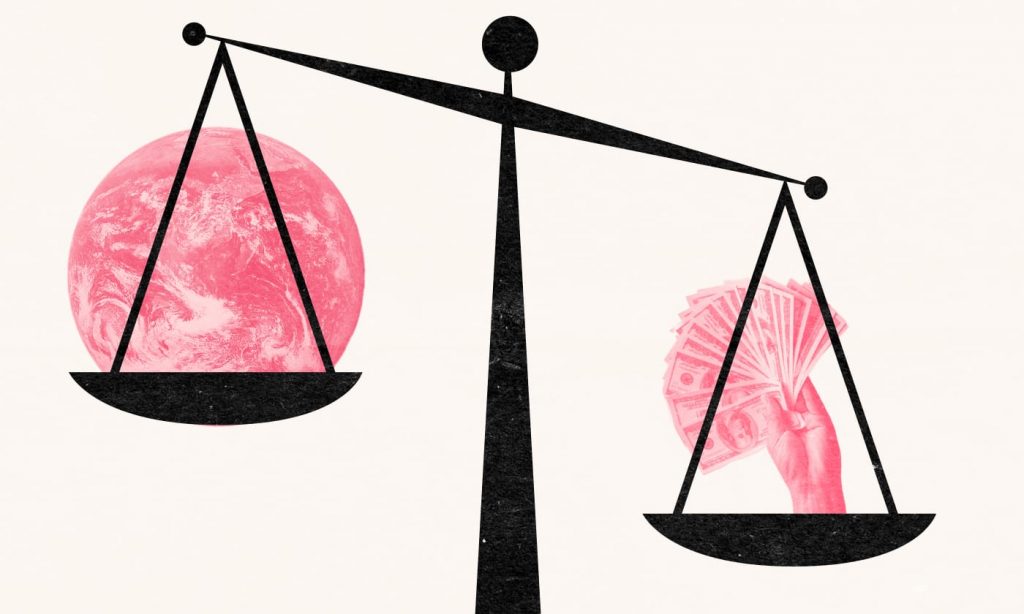
While the ICC is busy with sanctimonious show trials in the Global South, the need for a supranational criminal court that prosecutes corruption without fear and favour is rising.
In the law of the jungle, kleptocracies are shielded by plutocracies. The latter keeps the former in power. A reality all too familiar in a world dominated by the black and white absolutisms of realpolitik. It is for this reason that geopolitical power alliances currently assume complete precedence over the rule of international law. Dictatorial regimes almost always double up as localised kleptocracies. They serve as the ultimate fodder for competing foreign policy interests allowing world powers to act unilaterally outside the purview of international law. Such exchanges are all too typical of fledgling geopolitical arenas in the Global South.
Authoritarianism is applied through totalitarian decree. Both share a top-down and bottom-wide connection to corruption. A kleptocracy derives its economic lifelines from wealthier plutocracies in the Global North in what is otherwise a lopsided system best described as “state welfare economics.”
A world governed by the law of the jungle is a world threaded by corruption
This explains why corruption is a fact of everyday life in developing countries. In such socioeconomic environments, simple clerical tasks cannot be facilitated without bribes or some form of bureaucratic extortion. This mirrors the overall quality of society people in fledging nations live in, while surviving at strictly subsistence levels. A world governed by the law of the jungle is a world threaded by corruption.
Few will disagree with the need for a supranational criminal court dedicated to fighting the scourge of political corruption, but any grand proposition is not without conceptual shortcomings when rectifying practical applications.

First proposed in 2012 at the St. Petersburg International Legal Forum by the American federal jurist Mark L. Wolf, the argument for an “anti-international corruption court” was made. This is ironic considering Judge Wolf made the proposition for such a supranational court in what is otherwise the most recognisable kleptocratic plutocracy today: Putin’s Oligarchical Russia.
Therefore, in the case of Russia, one can make the argument that a plutocracy is nothing beyond that of a sophisticated kleptocracy with a permanent seat at the United Nations Security Council. We will even find kleptocrats and their plutocratic counterparts agreeing on the need for an international anti-corruption court.
However, in a world riddled with geopolitical corruption as the de facto standard of international relations among competing world powers, a series of “centenarian questions” must be raised to initiate dialogue on the formation of such a supranational legal entity; but where to begin? Will the court function independently of the International Criminal Court? Would a supranational court dedicated to fighting corruption on the highest levels of government be better served as a direct subsidiary of the ICC?
Read more: What is the difference between the ICJ and the ICC?
Where to begin?
The big picture question prosecuting the effectiveness and impartiality of such a propositional supranational authority comes crashing down to a rather simple conceptual question: how can an International Anti-Corruption Court bring offending state actors and their officials to justice in a world where superpowers impose their own legislation against supranational authorities?
This can, for instance, be seen in the “American Service Member Protection Act” evidenced in Washington’s dealings with the ICC. How will a future International Anti-Corruption Court (IACC) negotiate challenges associated with extraditing offenders from nations that:
- Never recognised the supranational authority of the ICC in the first place or;
- Nations that signed the founding charter of the ICC, but subsequently withdrew due to conflicting interests associated with their respective foreign policies as seen with the United States and the Russian Federation?

The United Kingdom and France are the only world powers that have fully committed to the charter of the ICC and stand ready and willing to extradite their own nationals before the seat of international criminal justice, but does such a “matter of fact reality” truly suffice to meet the needs of international criminal justice considering the double standards seen in power alliances shared with greater powers like the United States and China that have since withdrawn or refused to recognize the ICC altogether?
When tasked with the enforcement of international criminal law, the prosecution of political corruption is assumed to be its central modus operandi. Officials standing trial are often implicated in corruption leading to greater crimes against humanity, like war crimes and crimes of aggression, with the latter two prosecuted, but with the former left out.
It is for this reason that the need for a separate supranational legal authority dedicated to fighting political corruption is indisputable, but can only be achieved with an enforcement arm dedicated to the extradition of offenders.
What if INTERPOL was absorbed into IACC?
This calls for a daring proposition: what if INTERPOL was absorbed into the would-be supranational authority of the IACC and housed in a geopolitically neutral nation like Austria or Switzerland? Is such a subordinated alliance possible in a world defined by geopolitical entanglements and diplomatic hypocrisy where immunity is defined by the underlying rulings of realpolitik?
The future success of an IACC will rest in its ability to extradite offenders from the world’s leading powers, rather than just being limited to former washed-up dictators and generals from the Global South where sanctimonious show trials become the standard of international criminal justice.
“We always hope for change, but we are powerless. We are just refugees”
By Atika Harba
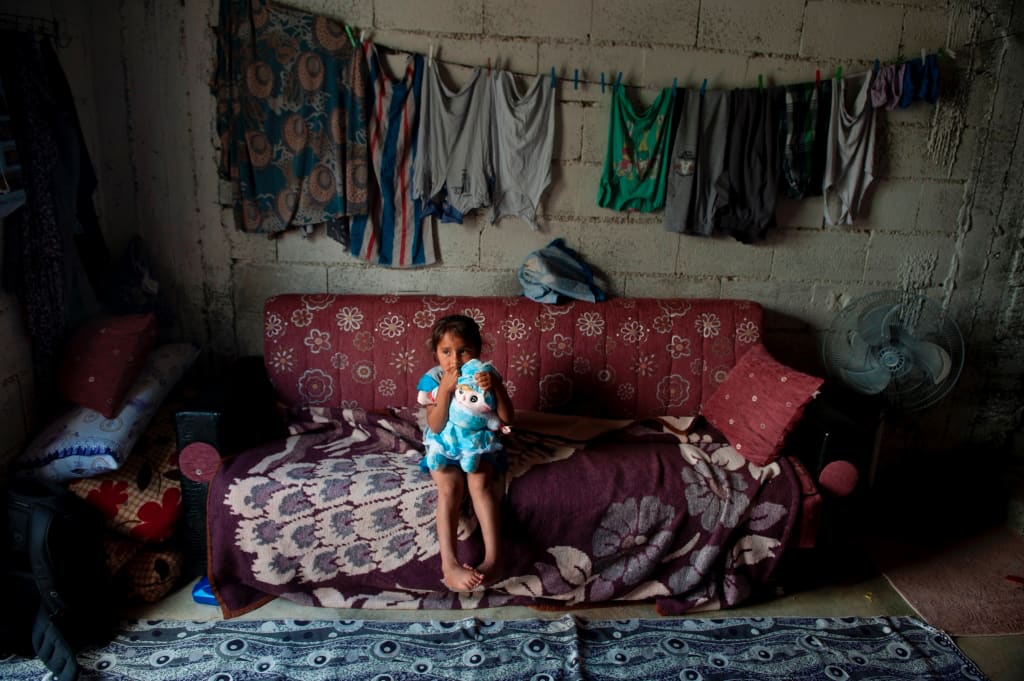
I went to visit a friend of mine, it has been a while since I visited her and when we sat down and started chatting. She started telling me the story of a neighbour of hers in the camp who got very sick with corona and her children started running around to help her. She was then admitted to the hospital and put on an oxygen cylinder. The story filled me with sadness and thoughts filled my head. What is this epidemic that has taken over the whole world and claimed the lives of many friends and loved ones?
Today the weather is very cold and a strong windstorm changed the features of the camp. I stood at the door of my tent to see what was happening and only saw people rushing to secure their tent covers so that they would not fly. This is a very painful thing because it will be repeated with the coming of every storm and there is no trick in hand to change it. I wish that I could provide even a little help, but I can only watch.
Now the situation for the camp’s residents is difficult and there are harsh days ahead. The economic situation is critical and fuel prices have risen. People do not know what their condition will be during this cold winter, nor how they will keep their children warm. Some have suggested firewood, but prices are very high and we are afraid that it will cause fires in the camp. Obtaining medicines too will be a problem because all the children get sick as a result of the lack of heating. We always hope for change, but we are powerless to do anything. We are just refugees.
The weather is bright and wonderful, and I have no place to sit and contemplate the clear sky except at the door of my tent. A child was playing with the rest of the children. I called him and asked him what was the most beautiful thing in this life. He said to me: “My father and my mother.” I smiled and asked him what else made him happy. He told me it was going to school.
- The following entry was written in November 2021.
- Diaries from Refugee Camps is a series that gives readers a glimpse into the challenging life of refugees.
Petronilla Paolini: Her tragic life and daring poems
By Carla Pietrobattista
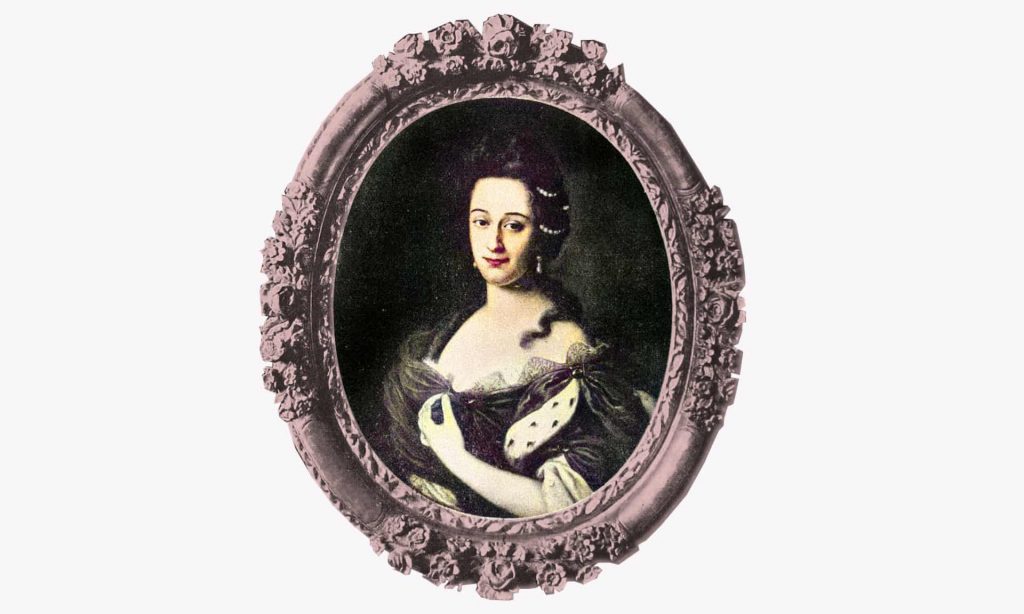
Born in 1663, Petronilla Paolini broke through society’s patriarchal cage with the only weapon she had at her disposal, her art… writes Carla Pietrobattista.
Up to now, I have mostly shared my impressions on art intended as visual art, examining paintings or sculptures. I have rarely strayed into technical intricacies when writing about art because when I decide to talk about a topic, I do not follow particular selective criteria, I simply rely on my instinct, on the urgency to share emotions and these are almost always solicited by the great works of art history. This time I felt the same solicitations and emotions that I have just mentioned, and I discovered them in part thanks to a casual “encounter”.
A few weeks ago I was asked to write a short introduction to a book that will soon be published: a text that is a reworking, or rather a sort of “translation” of the diary of a writer from the past: Petronilla Paolini, whose memoirs are about to be made known to the public after a re-adaptation of the language that has been made more current and easy to understand.
Although Paolini’s literary works have always been commended by the literati and praised in the milieu of modern literary criticism, due to a historical process of forgetfulness, few people really know her output in-depth, and even fewer her personal history which will be the subject of my essay.
Petronilla Paolini in Magliano: In my case, Petronilla, or at least her name, has never been far, because the noble Paolini family owned a palace in my town: Magliano dei Marsi in Abruzzo. In the immediate vicinity of this building, which was destroyed by the Marsica earthquake of 1915, a street was named after her in order to keep the connection alive. However, apart from the familiar name, I only really got to know the poet later in life. After reading the intense and personal entries in her diary, I felt the need to share the story of Petronilla characterised by gross injustices but also, despite the historical distance that divides us, by a profound modern relevance.
Who was Petronilla Paolini?

Petronilla Paolini was born in Tagliacozzo on Christmas Eve 1663 and died in Rome on March 3, 1726. She was the only and beloved daughter of Baron Francesco Paolini and the noble Silvia Argoli. The poet’s early years were quite peaceful, in her diary she describes herself as a happy, intelligent and curious child, keen to know and discover the world. This initial serenity was soon upset by a violent and unexpected event: the killing of the poet’s father on February 13, 1667, very probably for political reasons.
Early life
Petronilla, who as already mentioned was an only child, found herself inheriting a considerable legacy which was the main reason for all the misfortunes that characterised the young woman’s life. Her relatives, especially her father’s brother, began to show great jealousy towards the young woman and, in a strongly patriarchal society like that of the time, they did everything to manage her assets and forcefully replace her mother.
The mother of the young Petronilla did not know how to face the climate of hostility that had fermented around her after the death of her husband and she, therefore, decided to move with her daughter to the convent of Santo Spirito in Rome in 1667. Here the standard of living of the two changed substantially, not only due to the transfer, but because their roles within society had drastically altered. In fact, according to the mentality of the time, the two had simply become women in need of protection and alas they got it!
However, this was at a decidedly too expensive price for the young Petronilla who, on November 9, 1673, at the age of nine, had to marry the forty-year-old Roman nobleman Francesco Massimi, deputy castellan of Sant’Angelo.
A forced marriage
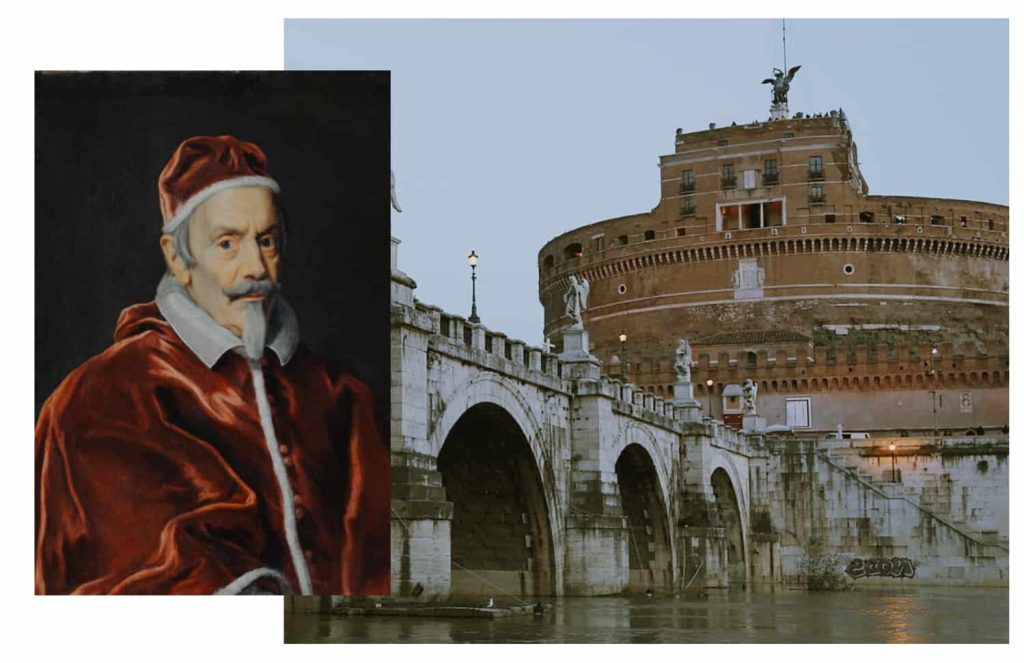
This was anything but a marriage of love, resulting from the noble feeling of protection. The child bride did not feel love for obvious personal reasons, nor did her husband, who was only driven by economic gain. More than a marriage, I find that in fact, we are talking about a wicked pact masked by respectability and nobility of purpose. A wedding where all the male protagonists of the event skilfully wore a mask, even before the one worn by the “saviour and protector” groom. The most important mask was worn by those who made the celebration of this union possible: Pope Clement X, a relative of the Massimi, who gave a special marriage licence to Francesco.
The strong hand of fate, joined the fair April of my years, to alien old age…
Petronilla moved to Palazzo Massimi in 1675, and then followed her husband to Castel Sant’Angelo in 1678. It is here that the poetess wrote: “Under an illustrious title in closed horror I stepped beyond the most beautiful hours.” The only consolation, the only freedom for the young woman was writing, however, her despotic and jealous husband prevented her from writing and composing poetry.
Petronilla had three sons from Massimi, but becoming a mother did not improve her position at all, on the contrary, the constant harassment and humiliation became so difficult to bear that, on November 16, 1690, she left her husband and children to return to live with her mother at the convent where she grew up.
Resurgence
The vengeful husband, on the strength of a court order in his favour and motivated by the usual feelings of hatred, prevented Petronilla the use of the assets that should have been her due by right, in accordance with paternal inheritance; nor did he allow her to visit or attend to her sick son, Domenico, who later died (1694).
Away from her husband, Petronilla found consolation in her faith, but above all in poetry. Now free to write, the woman began to compose sonnets and other works (see a full list here) that made her known outside the walls of the convent that housed her. In a historical moment in which writing was often the prerogative of men, Petronilla became a member of the “Accademia degli Insensati” of Perugia, of the “Accademia degli Infecondi” and of “Arcadia” in Rome. She was identified by the name of Fidalma Partenide.
In 1707, on the death of her husband, Petronilla left the convent and moved to Palazzo Massimi where she could get back her possessions and, above all, she was able to get close to her children once more. Strengthened by this new freedom, the poet continued to compose and in 1709 she returned to visit the places of her childhood in Abruzzo.
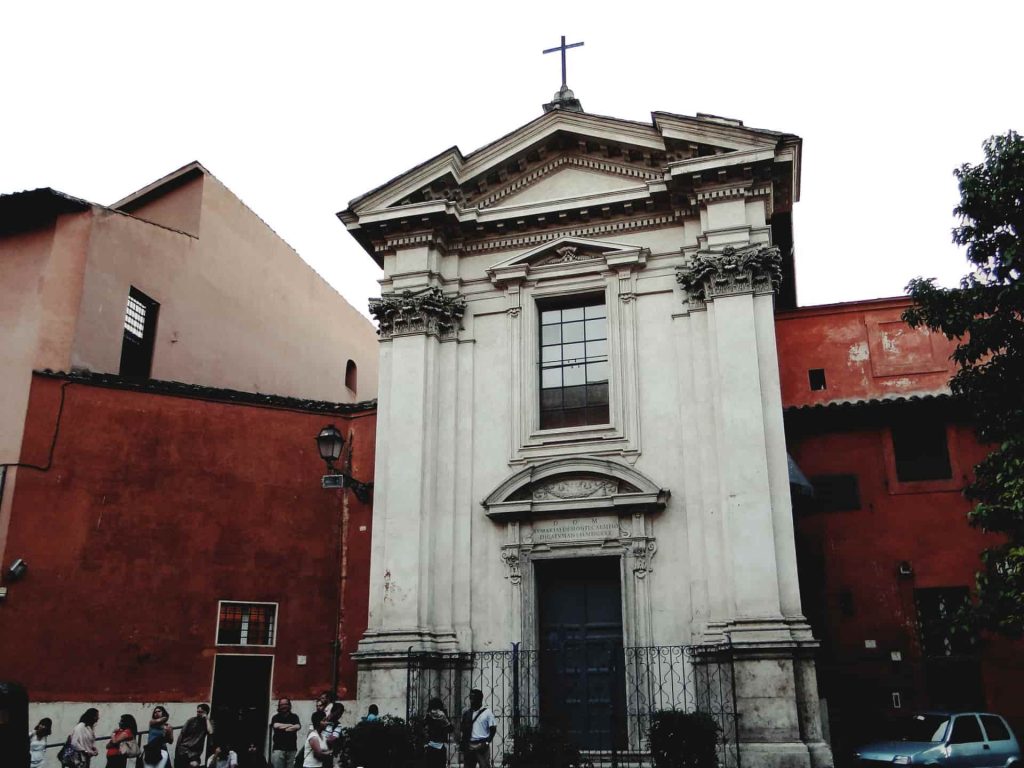
Petronilla died in Rome on March 3, 1726, she was buried in the church of Sant’Egidio in Trastevere where she is commemorated by a small funeral monument.
A women of courage
Reading the official story of this woman, but especially the pages of her diary, I began to see Petronilla with new and different eyes.
I saw in her a woman who lived two distinct lives. In the first, she was a beloved daughter, orphan, child bride, unhappy wife, and mother while, in the second, she was a woman capable of redeeming herself. In this second phase, she was a woman of faith and a mother capable of detaching herself from her children, aware of the fact that time would again allow her the possibility of living her life as a mother. She was not willing to continue being an unhappy prisoner, just to carry out their parenting role.
Nevertheless, it is remarkable how much of Petronilla’s life took place behind closed doors; first those of the convent, then those of Castel Sant ‘Angelo. Yet these cages did not really lock her up; Petronilla broke through them with the only weapon she had at her disposal: her art.
Through her works, she has been able to teach us that no one should be crushed by their own destiny. Everyone can decide to write their own story with the same courage, the same conscious determination of Petronilla, a woman and a poet.
Emotional health: 4 ways you can improve it today
By Sonia Roopnarain

Being emotionally healthy is just as important as being physically healthy: the two are closely connected at various levels. To ensure that we lead a fulfilling life, we have to take that extra step.
“Emotions change the way we see the world”. This is a quote by Paul Ekman and it has been interpreted in so many different ways in so many movies and books. Emotion is a powerful word and dictates a huge part of our lives, but it is surprising to see that a minuscule amount of people know about emotional health and even a smaller number work towards achieving it.
In the book “Chaos of Standing Still” by Jessica Brody, the hero, Ryn, is dealing with the insurmountable loss of her childhood best friend, but rather than facing her grief, sadness and anger, she just buries these feelings under a rock. She doesn’t cry for a year and cuts everyone out of her life, while just clinging to the last memento of her best friend (an unread message). When she finally lets go and embraces that grief and cries, she starts seeing things clearly. She finally feels happy.
From the above instance, one thing is very obvious: in order to feel happy, it is also very important to feel sad. All emotions that we experience are equally important and it is essential to stay in tune with them.
For starters, it is important to understand that mental health and emotional health are not the same. Emotions come under the broad umbrella of mental health. Emotional health is coping with both positive and negative emotions, which includes us being aware of them.
What are the different types of emotions?

According to Paul Ekman, who developed the widely accepted theory of basic emotions and their expression, there are six basic emotions:
- Sadness: an emotional state characterised by the feeling of disappointment, grief and hopelessness.
- Anger: an emotion where we feel frustrated and hostile.
- Happiness: an agreeable or positive emotion that creates a feeling of joy, contentment and happiness.
- Fear: a primal emotional state that induces the fight or flight response.
- Surprise: a brief positive or negative experience followed by an unexpected emotion.
- Disgust: a strong emotion induced by repulsion.
These are the basic emotions, but like colours, they mix and match to create complex ones such as “hate”, which is a combination of anger, disgust and fear. Other emotions could be embarrassment and love. These emotions have varied expressions and are hard to recognise.
What is emotional health?
The most important question here is why do we need it? Emotional well-being is essential for contentment and success in professional and personal life. Just like in the movie “Work it” our protagonist, Quinn, thought that achieving an Ivy League College would make her happy. Finally, she realises that happiness will not come if she goes to Duke University, but being happy will help her be successful because when we are content, we work better, which in turn makes us successful.
Emotional health does not mean that we are always happy or free from negative emotions. It is about dealing effectively with both kinds of emotions to lead a healthy life. To do this we need to be consciously aware and receptive to all our emotions.
How can you improve your emotional health?
The strategies/tips below may seem easy, but keep in mind what seems easy to do is also easy not to do. So, keep in mind to start with one change at a time and stick with it and you will see phenomenal effects in your life.
1. Regulate your emotions

In situations of stress, it is very easy for emotions to get the best of us and when we react harshly, it doesn’t do anything, except escalate the situation. But learning healthy and constructive coping strategies help us get in tune with our temper and control it.
Some coping strategies are:
- Meditation or practising mindfulness daily
- Journaling (writing down our thoughts and feelings to understand them more clearly) and introspecting on our thoughts and actions
- Listening to music
- Talking to a therapist when we are too troubled
2. Exercise regularly

Exercise helps release feel-good chemicals like endorphins in the body, which in turn, improves our mood and makes us more relaxed. It flushes out toxins and reduces the levels of the fear hormone in our body.
Studies have shown that exercise improves self-esteem and reduces depressed mood and anxiety.
3. Enhance your relationships

Our bond with the people is indispensable and spending time to foster these connections is very important either personally or on the phone. Our family and close relationships become our backbone in times of distress and they give us a sense of safety. This is essential to achieve good emotional health.
4. Get quality sleep

Sacrificing sleep is the worst thing we can do to our physical and emotional health. The lack of sleep makes us view things negatively, impacts our thoughts, decisions, relationships and wreaks havoc on our confidence and emotional health. It makes us vulnerable to stress, anxiety, and depression.
Studies have also shown that the lack of sleep leads to weight gain, memory issues and leaves us at the risk of developing mood disorders.
Make sure you’re being consistent with your sleep and waking times and optimise your bedroom environment so that you’re getting enough rest.
These tips should certainly help, however, if you feel you need additional support, consult your doctor for further advice on how and where to find help.
How to combat forest fires: causes and 4 solutions
By Partho Pratim Chatterjee

Forest fires are accelerating at a staggering pace. Here are four measures that, if implemented, could help us prevent forest fires and protect pristine ecosystems.
Nowadays, forest fires are proliferating. The current temperature is around 1.1. degree centigrade above pre-industrial levels. This increase in temperature could be attributed to anthropogenic activity-induced global warming. The concentration of gases like carbon dioxide is increasing continuously in the atmosphere due to anthropogenic activities like fossil fuel-based power generation and the use of fossil fuels in internal combustion engines.
Recently, the National Oceanic and Atmospheric Administration’s (NOAA) Mauna Loa Observatory in Hawaii, USA recorded high amounts of carbon dioxide in the atmosphere. The greenhouse gases trap infrared radiation leading to a spike in global temperatures.
Forest fires also affect the wildlife, both fauna and flora, particularly the highly selective arboreal species like koalas which feed mostly on eucalyptus leaves. Let us now explore some of the causes of forest fires one by one.
What are the causes of forest fires?

Lightning is produced due to the triboelectric effect in cumulonimbus clouds. Positive charge accumulates at higher altitudes whereas negative charge accumulates at lower elevations. This large charge separation results in lightning. When lightning falls on dry trees and shrubs, it ignites forest fires. As explained above, the frequency of lightning strikes is increasing due to an increase in global temperatures. This exacerbates forest fires.
Wind speed also plays an important role in the spread of forest fires. During summer, the earth’s surface heats up due to the higher intensity of incoming solar radiation in the particular hemisphere. The air surrounding the earth’s surface is warmed up due to the interaction with the hot surface. As the hot air rises up, a low-pressure zone is created. This draws air from cold areas (with high air pressure) leading to the formation of winds. These winds spread the forest fires from one tree to another.
A phenomenon that is more pronounced in tropical dry deciduous forests compared to tropical moist deciduous forests. Let us now explore some of the possible solutions to ameliorate forest fires.
Utilising the wake effect of windmills
As we learned, fire spread increases with the acceleration of wind speed for tropical dry deciduous forests. In these areas, a win-win situation could be to use the wake effect of windmills, the aggregated influence on the energy production of the wind farm, to reduce wind speed along with producing electricity.
The placement of the windmills needs to be done in a manner such that it reduces the incoming wind speed after passing through subsequent windmills. In this regard, an optimisation between Capital Expenditure (CAPEX) & Operational Expenditure (OPEX) of the windmills versus the extent of reduction in wind speeds needs to be worked out. The electricity generated could be fed to the power grid.
Using drones to monitor
Drone-based surveillance could be carried out in forest fire-prone areas. Using infrared cameras, the drones could take images and those could be continuously sent to forest control rooms to detect the presence of forest fires. If any fire is detected, helicopters or Vertical Take-Off and Landing vehicles (VTOL) can be used to spray water or carbon dioxide on the fire site.

The water to be used for this purpose could be sourced from grey water after proper treatment. Carbon dioxide could be sourced from carbon capture and storage systems. This would be compatible with the concept of “Waste to Wealth”.
Satellites with Synthetic Aperture Radar could be used to provide images of forest fire prone zones. The images could be sent to earth-based observatories. In these observatories, the images obtained from the satellite could be matched with reference images using Artificial Intelligence. If the presence of a forest fire is detected, SOS messages can then be sent to forest control rooms.
Making trees shockproof
To prevent trees of archaeological importance (like Wollemi Pines, Australia) from damage due to lightning, copper alloy-based metal rods could be installed on the top of these trees. A copper wire could be attached to this rod. This wire can be connected to a copper alloy strip in the ground. As these wires provide an alternative low-resistance path to the lightning strike to reach the ground, the lightning strike avoids travelling through the tree and damage is averted.
Creating an industry around protecting forests
Mitigating and extinguishing forest fires could be classified as a green job and dedicated training will be provided in this regard to local youth in vulnerable areas to assist state agencies in dousing the fire. To promote the popularity of these jobs, efficient and diligent youth working in these roles could be inducted into national forest services.
These measures, if implemented in a techno-economically viable and environmentally sustainable manner could prove to be an elixir to mitigate the increasing proliferation of forest fires and prevent damage to pristine ecosystems.
Football: ‘Unsuitable for Women’ or were you just not brave enough to see the vision?
By Maya Bearyman

Ask any British woman about sexism, and she’ll likely tell you a story of her experience, ask any British woman that played football, and she’ll probably tell you five.
It is undeniable that football has a problem with sexism, which is why the Lioness’ (English Women’s football team) victory on Sunday 31st July 2022 at the Women’s European Championship means so much. I am a 23-year-old English woman who grew up playing football, and I had never even thought to dream that I might watch the England Women’s team win whilst 17.4 million people tuned in to watch. Very few did; it simply seemed impossible.
Last year at the Men’s Euros, female spectators were often pushed to the side of the game and made to feel that they did not belong. HHH Leeds football abuse story and quote HHH. Football is the national sport and past-time, to cut women out of it, is to bar women from participating in the culture of their country – the excitement of the beautiful game. The tension in England was palpable when it seemed like we might just beat Italy in the final of the European Championship to lift that trophy again as we did in 1966. But it was not to be, and the country stopped holding its breath to lick its wounds. Little did we know what was to come. This country is not accustomed to turning its attention to the Women’s game, paying much attention to women’s football. That has changed. The Lionesses have roared so loud that the country has been forced to listen.
If you track the history of women’s sports in England, it is not difficult to understand the root of this prejudice. Women were banned from partaking in the game last time England lifted a major football trophy. During World War I, and with men away fighting, women’s football grew quickly and indeed. In 1920, one match drew a crowd of 53,000 to the stadium, with a further 14,000 waiting outside. And yet just one year later, the Football Association banned women from using their grounds to host matches and prevented women from playing the game, deeming it ‘unsuitable for women’. The FA eventually lifted the ban in 1971, but by then, the public opinion had been set; football was not for women.

After 1971 women began to play, but there was very little investment, and even the best national players had to cover fees. Whilst men were earning millions, with their faces plastered on the walls of little kids up and down the country, women were forgotten. In 1968 Italy established its first national women’s football league; such privilege would not come for British women until 1991. The women’s game only became fully professional 5 years ago in 2017.
Less than a decade ago, I was fortunate to meet Alex Scott, arguably the best female player of her time, playing in undoubtedly the most decorated team in the women’s league: Arsenal. And yet, she told us that she was one of the only players in the squad who did not have a second job. At the same time, Theo Walcott raked nearly 6 million in salary alone from Arsenal. What that told us, as young girls entering the sport, was that women’s football didn’t matter to England; it was a hobby. No girl was expected to be half as good as the boys. But she also told us that she was fighting for the sport to be recognised, that the quality was there and that one day, things would change.
After the European finals, she spoke with a very different tone. She told her audience, having earned a highly-paid and coveted position as a BBC Sports Correspondent, that in 2018 many men’s clubs refused to allow their stadiums to host national women’s games. Reminding these teams to take a hard look at themselves, she told the nation that times had changed- she was done begging corporate sponsors to invest in the game. ‘If you’re not involved, you’ve missed the boat, you’ve missed the train. The train has left the station, and it is gathering speed. You weren’t brave enough to see the vision.’

This recent victory is about much more than winning a football game. It is the struggle of women to be accepted into sports arenas, to be given a seat at the table, let alone equal influence. When the Lionesses lifted that trophy, it was much more than the current team lifting it; from the women who never had careers because the FA chose to take their chances away with a sexist ban to those who were forced to pay to play despite being world-class players. It was lifted by little girls who never even thought to dream that one day they might be national heroes for playing the game they loved and by those who now have the chance to.
Some say that you cannot be what you cannot see. To those, I say go and speak to Alex Scott and the other pioneers of this game. It takes extreme mental fortitude to build the world you’d like to live in, on and off the pitch. The game faces many challenges, sexist abuse targeted at all players, from little girls trying to play in primary school to the top international players, is abhorrent yet widespread. Much of that abuse has a homophobic undertone. There are not enough grass-root teams, and those existing are overwhelmingly in white, middle classed areas. And yet now, let’s take a moment to soak in the joy of what inspirational, forward-thinking women have created. A victory built in a century, it seems fitting that 100 years after the FA’s ban, women have prevailed and done what the men could not; brought football home to England.
With immense pride but very little surprise, I say this; the women’s European final pulled the largest in-stadium crowd of any European game – male or female. Women’s football is here to stay: get on board or get out of our way.
Today’s London through the eyes of an old Communist hag
By Cristina Mihailescu
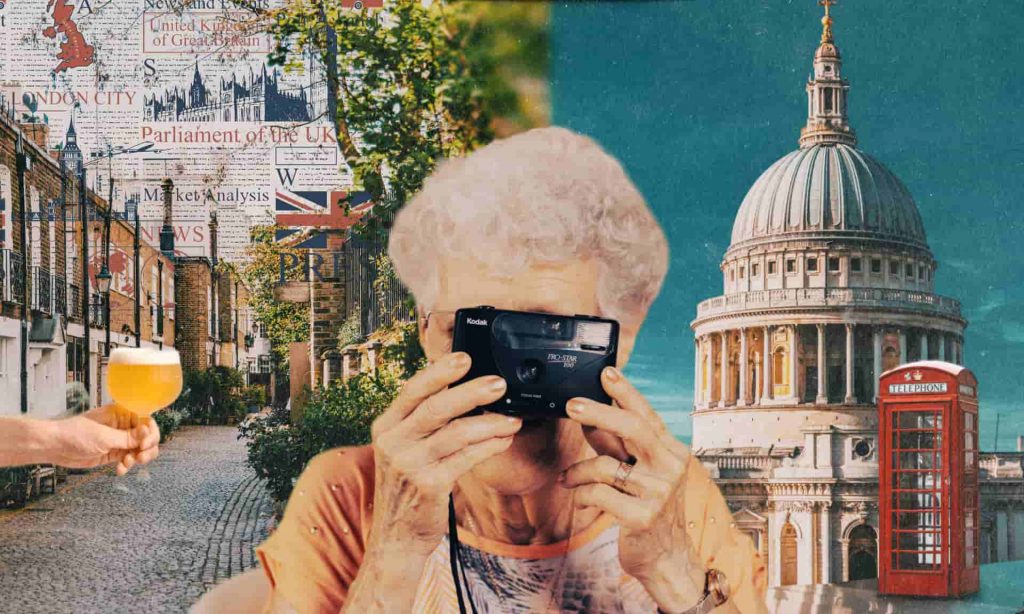
London has always been my dream. Ever since my first English lesson, back in 1974, I have imagined myself wandering along its famous streets, visiting its exquisite monuments, but the city was unlike anything I imagined it to be.
Communism forbade any dreams of travelling abroad. Apart from going to some other communist countries nearby, one couldn’t imagine any trip to Europe unless they belonged to the upper echelon of the Party. My parents did not belong to the Party at all- minor intellectuals could escape such honour, since they were neither the praised workforce nor dangerous through their profession. I also managed to avoid becoming a member of the Romanian Communist Party, but only for a couple of years – and then in 1989 the Revolution came and many things changed. For me, the most important achievements were the freedom of speech and the fact that my dream of travelling across the borders could finally become true.
The English language has been the love of my life. Hearing it in the streets of the U.K. would have been music to my ears- but it wasn’t meant to be. After the revolution, middle-class Romanians realised how poor they were in comparison to Europeans. Some of them left everything behind and had the courage to go abroad in order to earn a living by doing menial jobs. I was already middle-aged and too proud to do anything else than teach children.
Teaching English to the native speakers of English seemed hilarious, too far-fetched. Fortunately, my best friend didn’t feel like that. She left in her mid-twenties and, dozens of interviews, hundreds of courses and thousands of tears after, she became a College professor in the heart of London. And, although I am old enough to be her mother, she has never forgotten our friendship so a few years later she made my dream come true, inviting me over.

It was my first flight alone, but I was so excited that I forgot to feel scared. April 2022 meant a giant leap for me, although of no importance to humankind. I arrived at Heathrow, a place as big as my hometown. But my friend was waiting for me and I felt safe. Then, when getting on a bus, the driver, a tall, fair-haired middle-aged man, told me something and I simply froze. As politely as I could, I asked him to repeat and tears started rolling on my cheeks: I couldn’t understand a word, and I was an English teacher!
My friend quickly realised what had happened and comforted me, saying that his accent was really peculiar. In my defence, such a situation never repeated, but I will never forget how humiliated I felt, though it was only my fault, not his. Later on, all the people I talked to, and I have to admit I did my best to talk to as many as possible so as to get rid of that uncomfortable feeling of confusion, all the shop assistants, waiters, underground commuters of all races and origins were easy to understand, mostly because they were like me, non-native speakers. Then I met three local university professors with whom I really felt at ease: their English was just like in the books I had read.

Needless to say I was impressed by the magnificent buildings and monuments I had learnt about. Yet what impressed me more was the bustling city, the lively atmosphere in the streets, the colourful shop windows and red double-deckers making their way patiently along winding and sometimes narrow streets. I loved the parks and walked for miles and miles among old trees and gorgeous flowers, amazed by the friendly squirrels and swans and especially the green parakeets, so unusual, in my view, for this part of the world. I enjoyed walking along the quiet, parallel streets with quaint little houses displaying well-kept gardens in front. The trees were in bloom and I couldn’t help taking millions of photos. The weather kept being partly sunny for my sake; I only experienced a five-minute shower that provided the perfect excuse to taste some scones and a cup of tea.
By far, the place I enjoyed the most was Brighton, a fairytale seaside town which kept its 18th-century look of the Queens’ and Kings’ favourite resort. I will never forget the brick-red beach, the cold, calm water and the young people sailing or swimming just like in summer. I also admired the total freedom with which LGBT couples showed their love, nobody staring at them, like they would in my country.
But enough with the praise. The old hag should criticise something, shouldn’t she?
London Tube felt like the Tower of Babel
Firstly, what shocked me was that London has really become a melting pot of cultures and traditions. The underground was extremely crowded with people dressed in their traditional African or Asian style; one could hear almost any language being spoken. While I admired the pride with which these people wore their specific clothes and spoke their native languages, I felt sorry for hearing no English at all, as if I were in the Tower of Babel. I know that even some of my own best students, who are now living in the UK, keep speaking Romanian to each other, but somehow this makes me sad. I even saw elderly women who didn’t know a word of English, yet they had been living there for a long while. I might be wrong, but I do think one should know the language of the country one lives in.

Secondly, the mouse in one of the Royal Theatres… My friend presented me with a huge surprise as she had acquired tickets to a concert of my favourite singer. However, though the building was decorated in an old, sumptuous style, the audience drank beer and ate during the concert – which was not a rock concert! – and a mouse kept wandering fearlessly among the people. They seemed accustomed to such a sight, but for me it was… unusual, to put it mildly.
Last but not least, the famous Thames is dirty, and polluted by the many ships that travel along it. The Embankment and the old bridges are memories of a better time for this river, when it was more respected.
The old hag might never see all these wonders again. The world is changing so fast and those who cannot keep up the pace will disappear. I belong to a world that is dying, a world that believes in the power of culture and civilization. A new world imposes itself, one of equality in rights, regardless of gender or race, a beautiful world where love is all important. As a distant spectator, I cannot find it flawless, but I can only hope that it is not another utopia.
Why do you write so much about the Ukrainian war…? | AskRuby
By Ruby Goldenberg
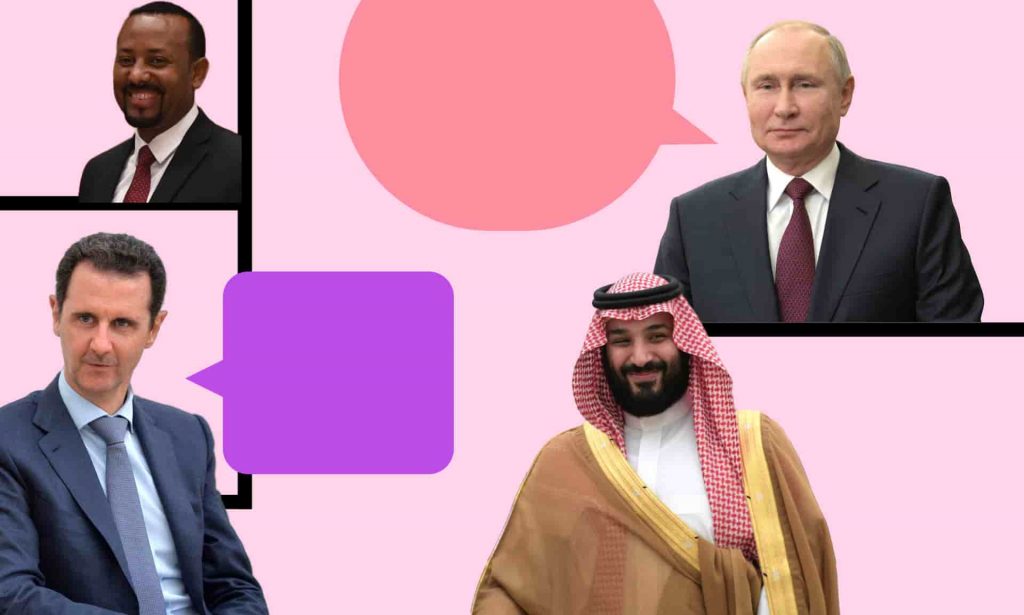
Question: Why do you write so much about the Ukrainian war, what about other wars?
September quiz
By Katha Wüstnienhaus
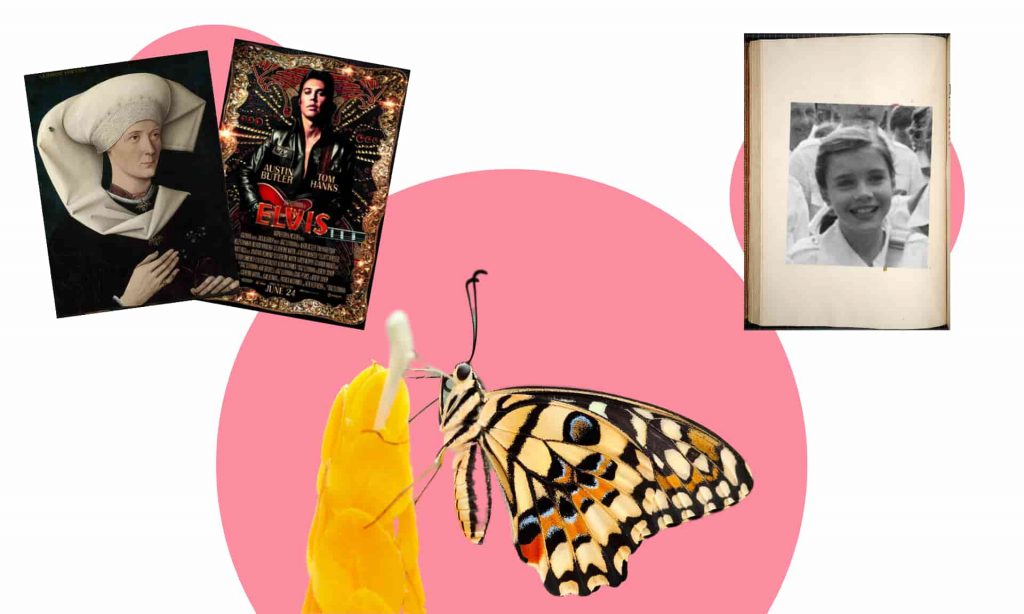
“Life is like a box of chocolates, it doesn’t last long if you’re fat” The Gordian Magazine’s September quiz is here.
Join us for some serious fun!
Thank you for tuning into this issue of the Gordian Magazine. Take care and see you next month.!

